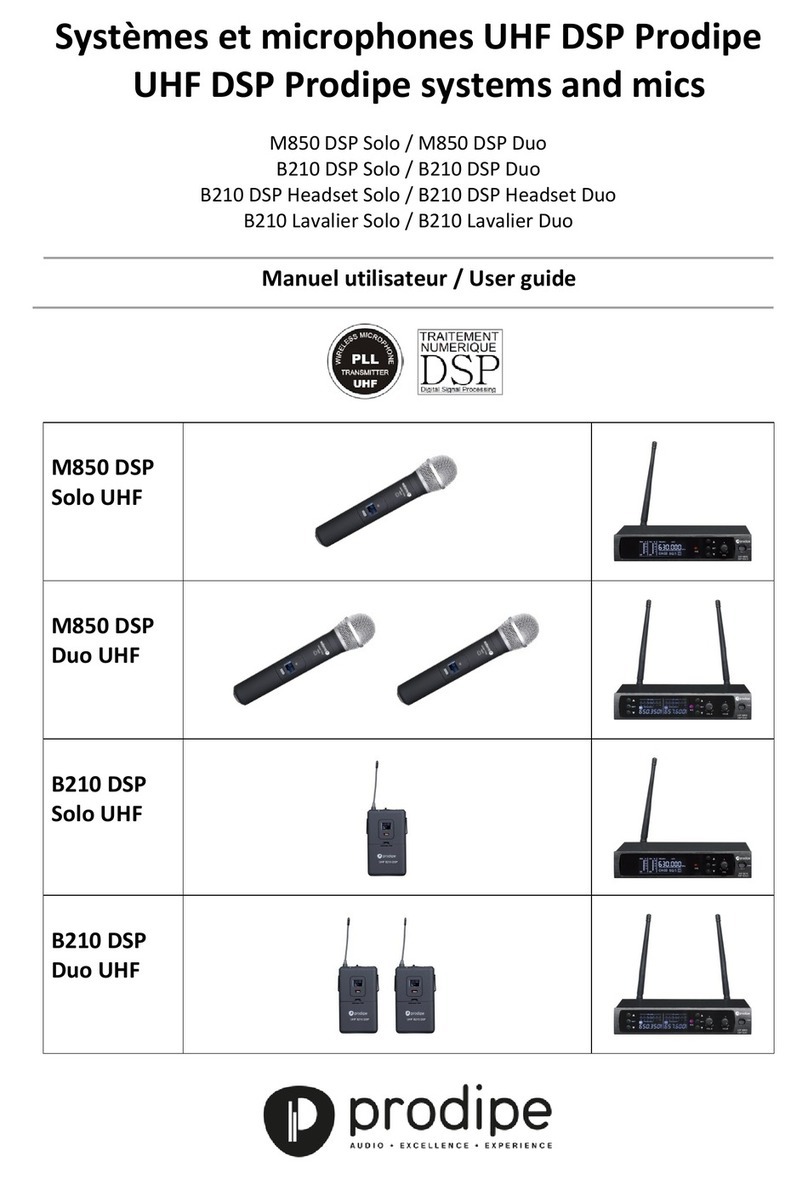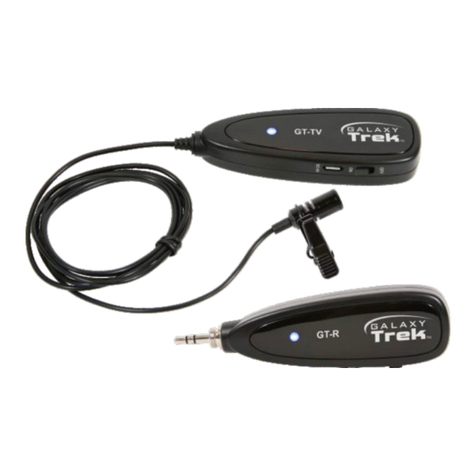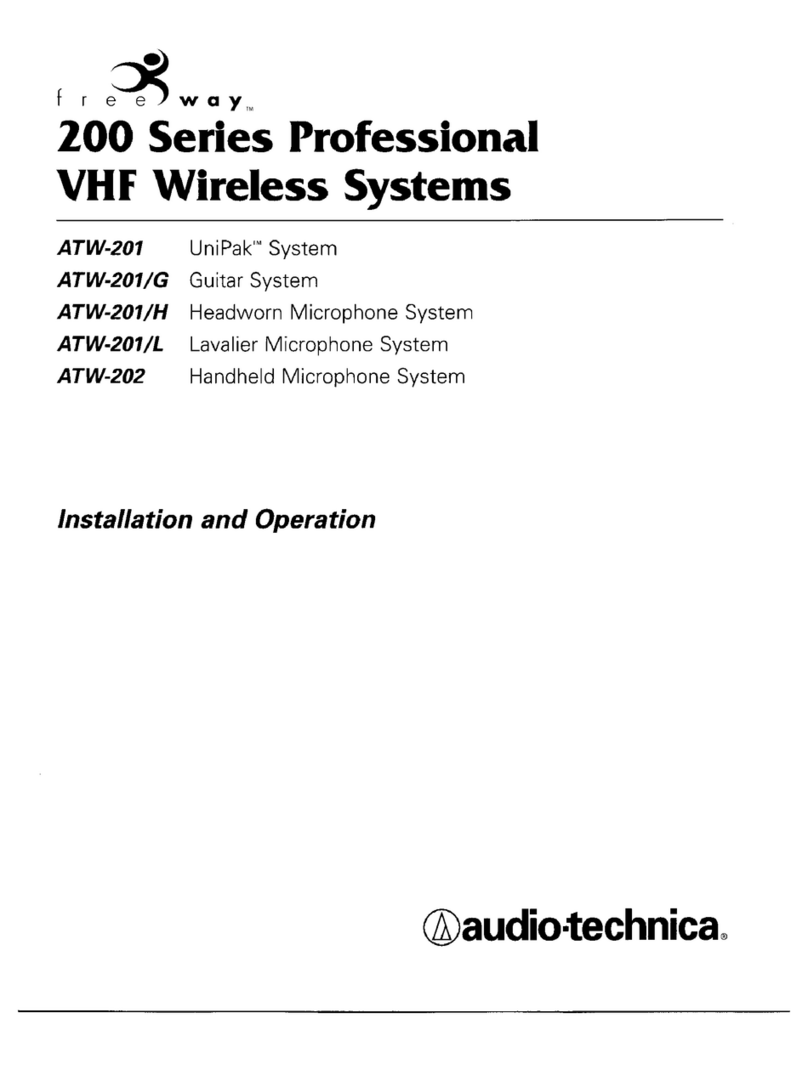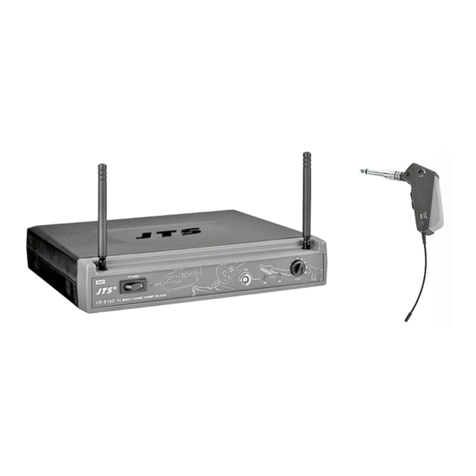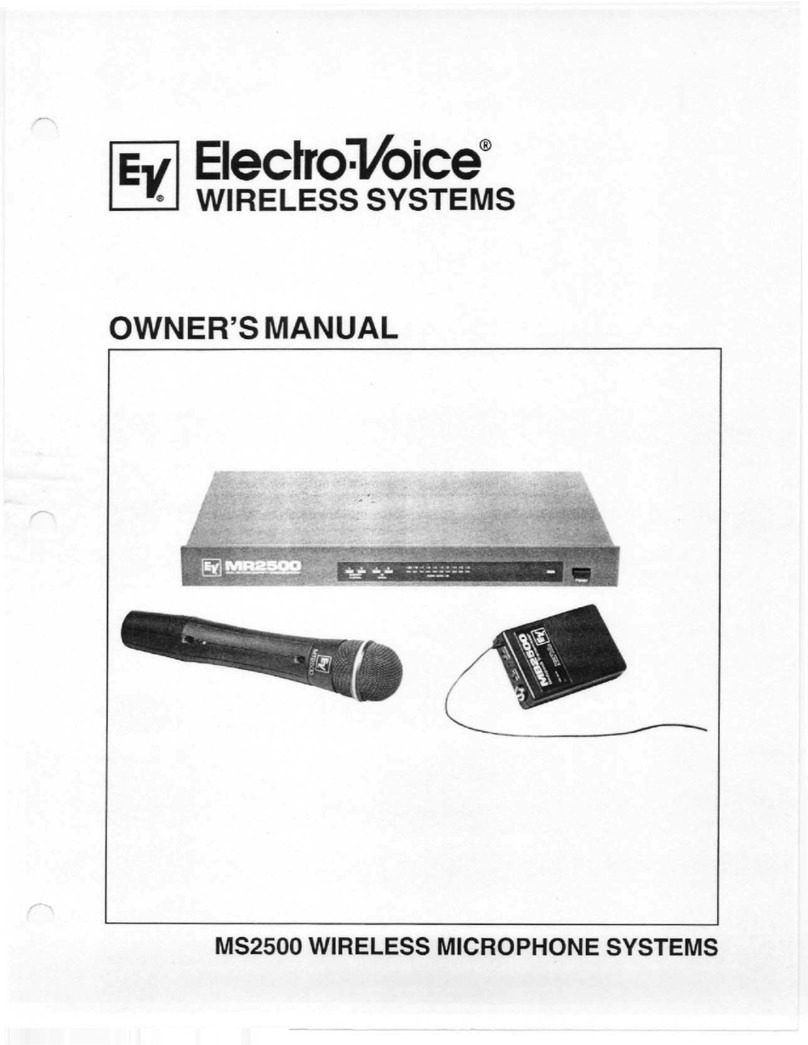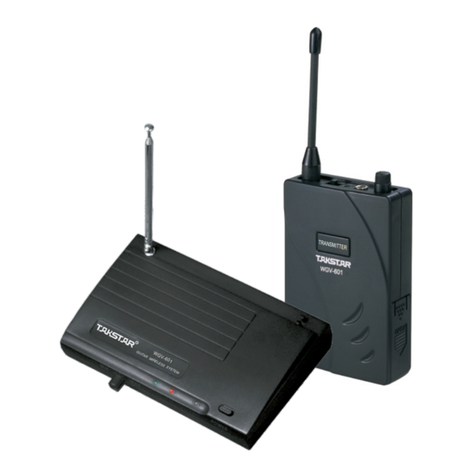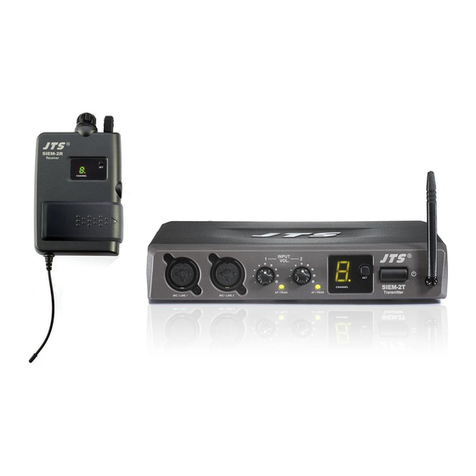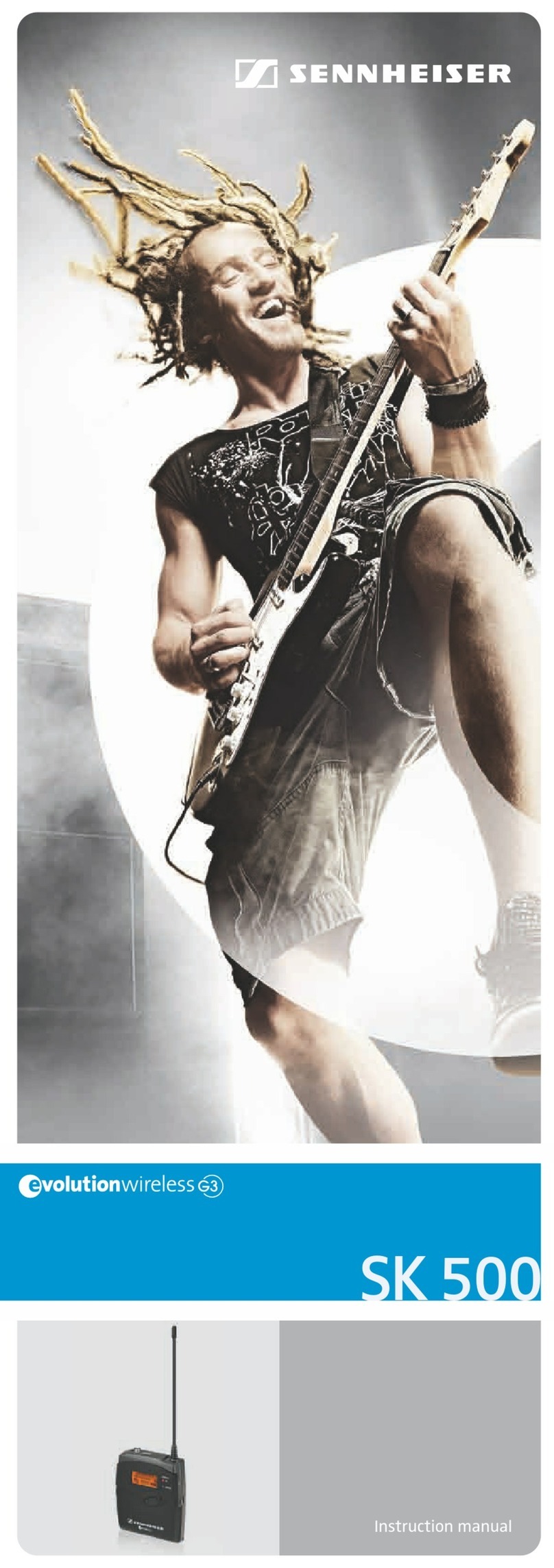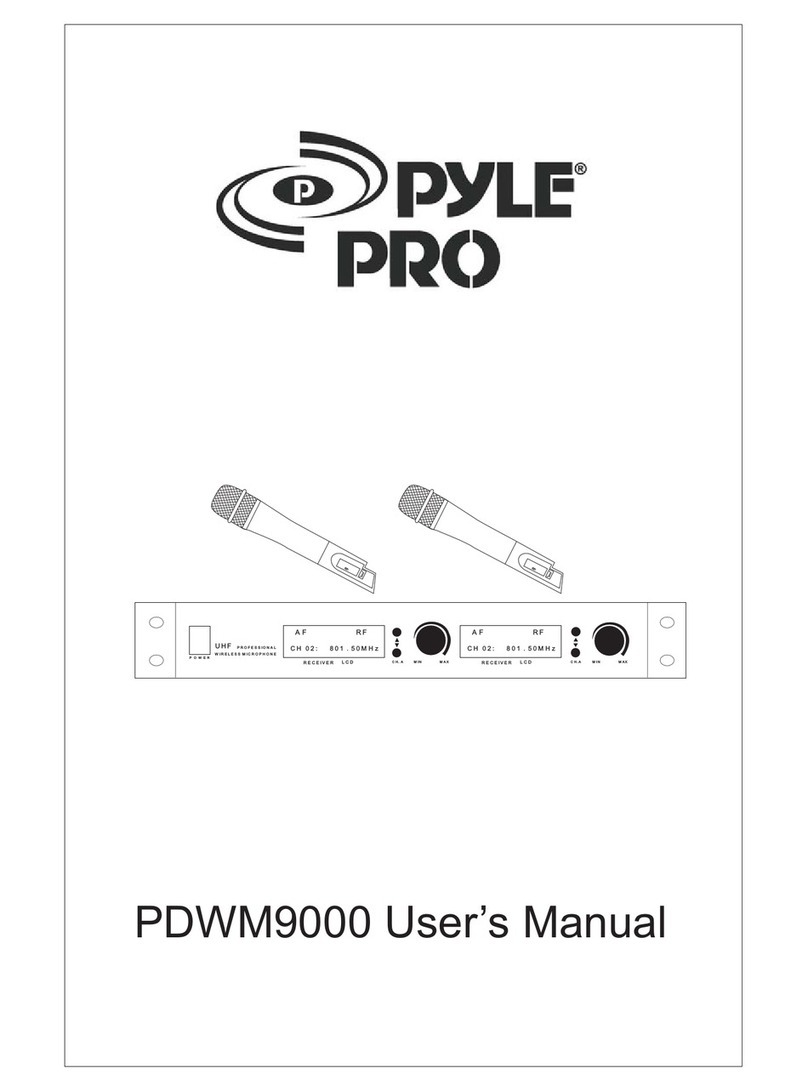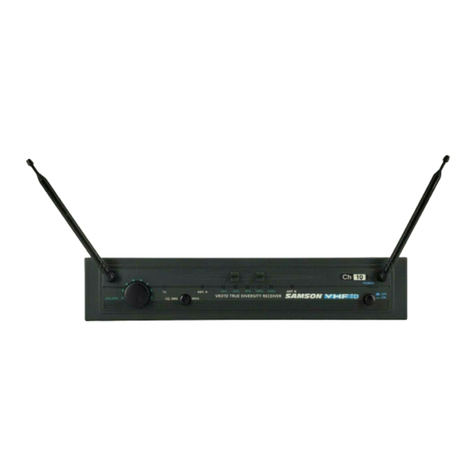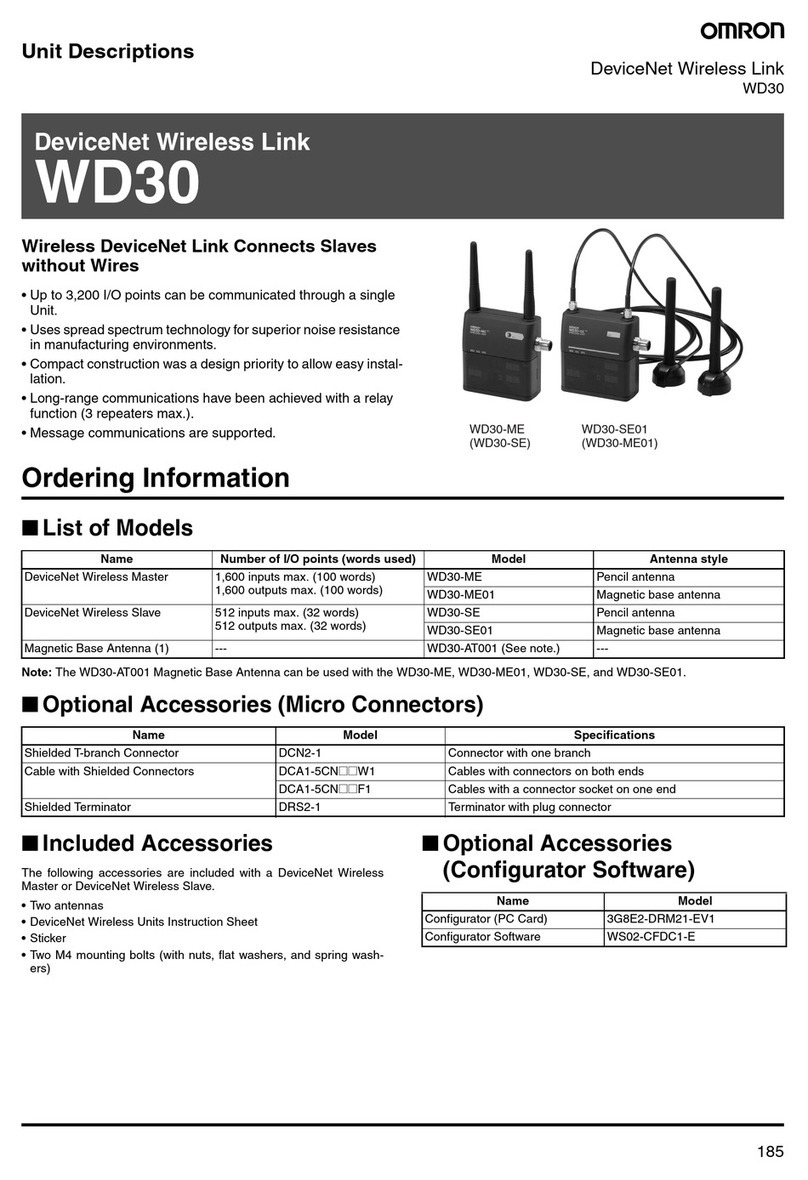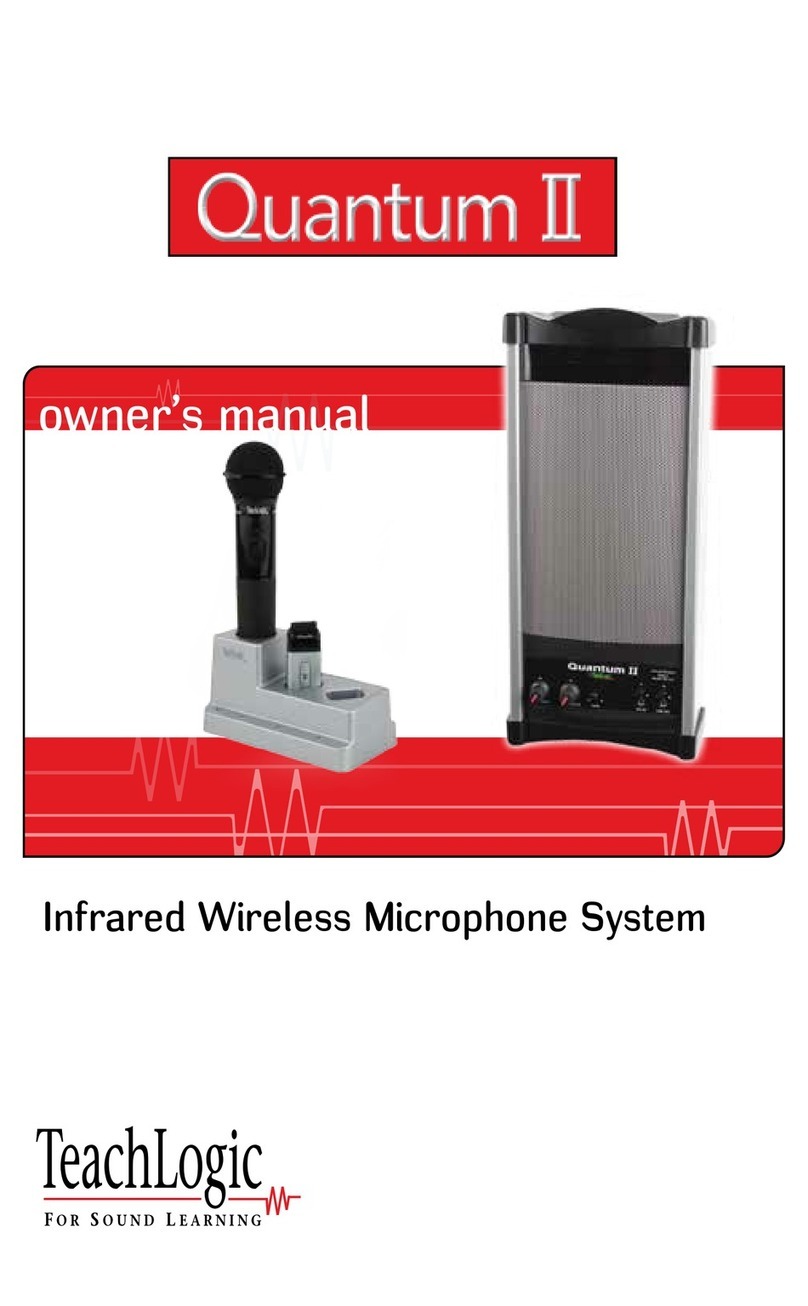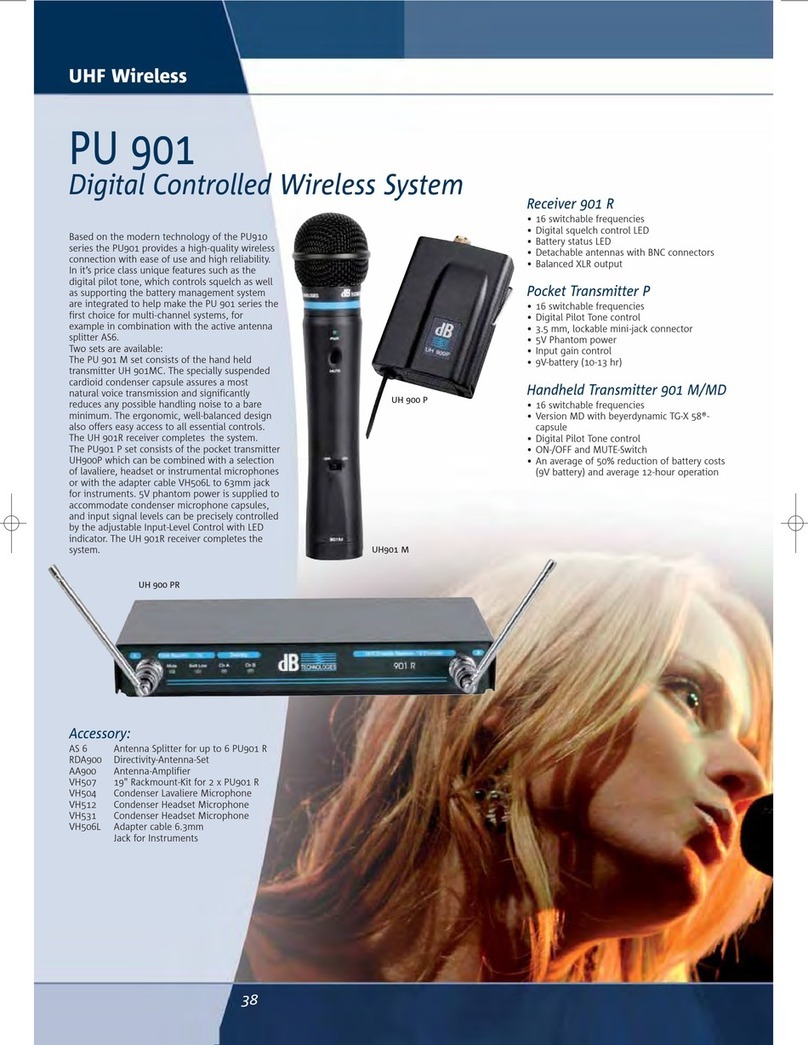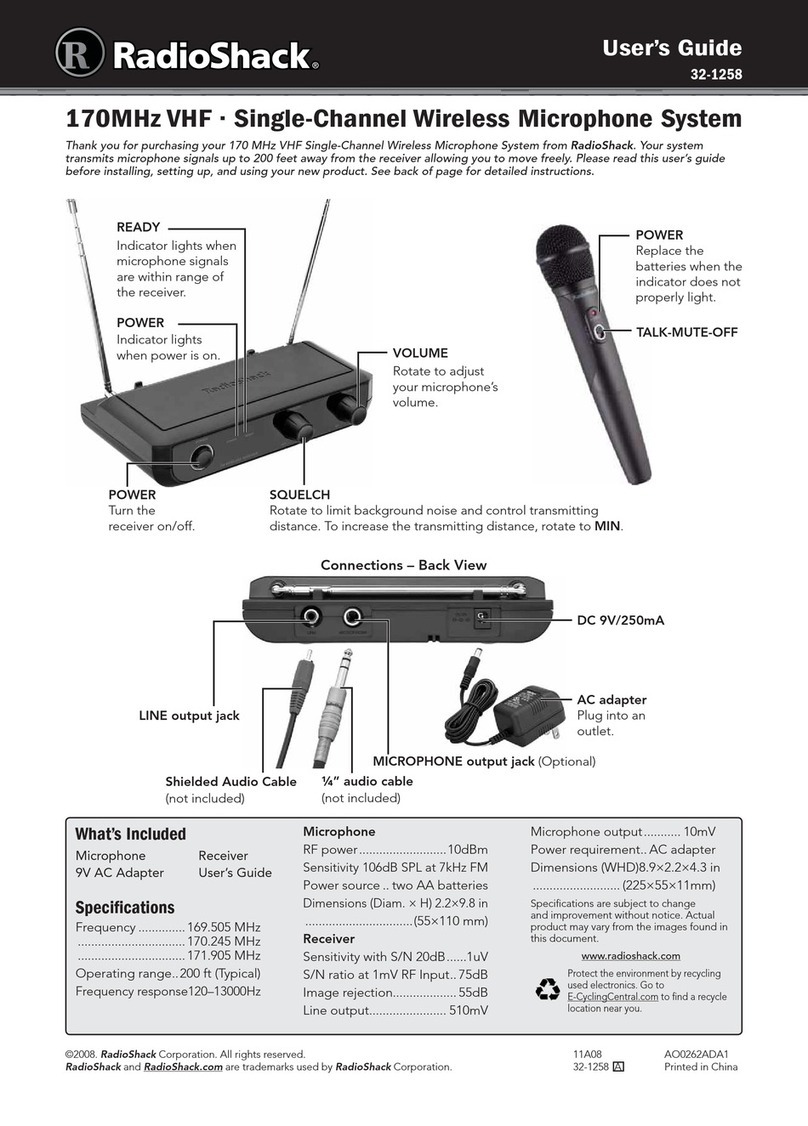Festo YSR-x-C Series User manual

Adelaide · Athen · Auckland · Barcelona · Bangkok · Belo Horizonte · Birmingham · Bologna · Bordeaux · Brisbane · Bruxelles · Budapest · Buenos Aires · Campinas · Cape Tow
Celje · Delft · Dublin · Duncanville · Durban · Eibar · Eindhoven · Firenze · Fukuroi · Göteborg · Graz · Guadalajara · Helsinki · Hong Kong · Istanbul · Jakarta · Joinville · Johannesburg
Kairo · Karlskrona · Kobenhavn · Kuala Lumpur · Leeds · Lille · Lima · Lisboa · Locarno · London · Lyon · Madrid · Malmö · Manila · Melbourne · Mexico City · Milano · Monterrey
Nagoya-City · Nantes · Oslo · Padova · Paris · Perth · Port Elizabeth · Porto · Port Washington · Porto Alegre · Praha · Pretoria · Puerto Rico · Quito · Rexdale/Ontario · Rio de
Janeiro · Roma · San José · São Paulo · Sarreguemines · Seoul · Singapore · Sofia · Stockholm · Sydney · Taipei · Teheran · Tokyo · Valencia · Warszawa · Wien · Yverdon · Zürich
Adelaide · Athen · Auckland · Barcelona · Bangkok · Belo Horizonte · Birmingham · Bologna · Bordeaux · Brisbane · Bruxelles · Budapest · Buenos Aires · Campinas · Cape Tow
Celje · Delft · Dublin · Duncanville · Durban · Eibar · Eindhoven · Firenze · Fukuroi · Göteborg · Graz · Guadalajara · Helsinki · Hong Kong · Istanbul · Jakarta · Joinville · Johannesburg
Kairo · Karlskrona · Kobenhavn · Kuala Lumpur · Leeds · Lille · Lima · Lisboa · Locarno · London · Lyon · Madrid · Malmö · Manila · Melbourne · Mexico City · Milano · Monterrey
Nagoya-City · Nantes · Oslo · Padova · Paris · Perth · Port Elizabeth · Porto · Port Washington · Porto Alegre · Praha · Pretoria · Puerto Rico · Quito · Rexdale/Ontario · Rio de
Janeiro · Roma · San José · São Paulo · Sarreguemines · Seoul · Singapore · Sofia · Stockholm · Sydney · Taipei · Teheran · Tokyo · Valencia · Warszawa · Wien · Yverdon · Zürich
Conditions regarding the use of Festo equip-
ment. This is important for reasons of safety
1.It is most important that only properly instructed and quali-
fied personnel use this equipment.
2. This equipment should only be used within the limits de-
tailed in the technical specification. Strict observance of the
technical specification should be ensured at all times.
3. Correctly prepared compressed air should be used at all
times.When installing the equipment and thereafter, the Cus-
tomer shall ensure that the environmental conditions at the
place of use are taken into consideration.
4. If the equipment is incorporated into a system or used
within safety devices or circuits, the Customer shall ensure
that national and local safety laws and regulations are ob-
served.
5. Should you require further information, please contact
your local Festo office.
These instructions are important. Please keep them in a
safe place.
Was ist beim Einsatz von Festo Elementen zu
beachten?
Die Einhaltung der jeweils angegebenen Grenzwerte für
Drücke, Temperaturen und die Beachtung von Hinweisen ist
Voraussetzung für die ordnungsgemäße Funktion und daher
vom Anwender unbedingt zu gewährleisten.
Es ist auf den Betrieb mit ordnungsgemäß aufbereiteter
Druckluft ohne aggressive Medien zu achten. Außerdem sind
die jeweiligen Umweltbedingungen am Einsatzort zu berück-
sichtigen.
Bei Anwendung von Festo Elementen im Sicherheitsbereich
sind stets auch die jeweiligen Vorschriften der Berufsgenos-
senschaft und des Technischen Überwachungs-Vereins
bzw.
die entsprechenden nationalen Bestimmungen zu beachten.
685 959
Bedienungsanleitung
Hydraulischer
Stoßdämpfer
Typ YSR-...-C
Operating Instructions
Hydraulic
shock absorber
Type YSR-...-C
ung. zul. opt. zul. fat.
0 25 50 80 100 125%
opt. = optimal opt. = optimal
zul. = permitted zul. = zulässig
ung. = unfavourable ung. = ungünstig
fat. = not permitted fat. = unzulässig Type YSRF-S...-C
Mounting flange with built-in adjustable
stop sleeve for an inductive sensor
Sensor Type SIE-…
(not available for certain sizes).
Typ YSRF-S...-C
Befestigungsflansch mit integrierter ver-
stellbarer Anschlaghülse für einen induk-
tiven Sensor Typ SIE-:
(nicht für alle Baugrößen erhältlich).
5. Operation
* In order to maximize the service life
of the YSR-...-C
• make sure that it is loaded as shown
in the following figure
5. Bedienung und Betrieb
* Zur Lebensdauermaximierung des
YSR-...-C:
• Sorgen Sie für die Auslastung des
YSR-...-C gemäß folgendem Bild
6. Maintenance
the shock absorber is maintenance-free.
6. Wartung
Die Stoßdämpfer sind wartungsfrei
7. Accessories
Type YSRF-...-C
Mounting flange for axial or radial
mounting.
7. Zubehör
Typ YSRF-...-C
Befestigungsflansch zur axialen oder
radialen Befestigung.
At temperatures below 0 °C:
Please note that the rest times of the
YSR-...-C become longer.
Low temperatures increase the viscosity
of the hydraulic oil.
Bei Temperaturen unterhalb 0 °C:
Beachten Sie, dass die Rückstellzeiten des
YSR-...-C länger werden.
Tiefe Temperaturen bewirken eine
Viskositätszunahme des Hydrauliköls.
Festo AG & Co. · Postfach · D-73726 Esslingen ·
(0711) 347-0 ·
722 727
0398 Gg / 0407d
Sous réserve de toutes modifications Reservado el derecho a modificacióne
Que faut-il savoir pour la mise en œuvre
d’éléments Festo?
Le bon fonctionnement des matériels n’étant assuré qu’à
la condition de se conformer aux indications données et
de ne pas dépasser les valeurs maximales indiquées telles
que pression, vitesse, masse, effort transversal et température,
il est par conséquent indispensable que l’utilisateur
veille à ce que cette condition soit remplie.
Il veillera de même à l’utilisation d’air comprimé non pollué
et de fluides non agressifs, en tenant compte des condi-
tions d’exploitation régnant sur les lieux de mise en œuvre.
En cas d’utilisation en zone de sécurité, se conformer aux
règlements des caisses mutuelles d’assurance accident
et des services de surveillance technique ou aux règle-
ments nationaux en vigueur.
¿Qué es lo que se tiene que observar al
aplicar elementos de Festo?
La observancia de los valores límites señalados para las
presiones, las tensiones y las temperaturas así como el
cumplimiento de las advertencias son las condiciones pre-
vias para el debido funcionamiento y tienen que ser garan-
tizades incondicionalmente por el aplicador.
Se tiene que prestar atención al régimen con aire compri-
mido debidamente preparado, sin ingredientes agresivos.
Además se tienen que considerar las correspondientes
condiciones ambientales en el lugar de aplicatión.
Al aplicar elementos de Festo en el sector de seguridad, se
deben observar siempre las correspondientes prescrip-
ciones del Sindicato Profesional y del Organismo Estatal
de Revisión Técnica o bien las disposiciones locales.
0398 Gg / 0407d
685 959
7. Accessoires
Type YSRF-...-C
Bride de fixation axiale ou radiale
(disponible pour certains diamètres).
7. Accesorios
Tipo YSRF-...-C
Brida de fijación para fijación axial o radial
(disponible sólo para algunos diámetros).
Type YSRF-S...-C
Bride de fixation avec douille de butée
ajustable incorporée pour capteur inductif
de type SIE... (disponible pour certains
diamètres).
Tipo YSRF-S...-C
Brida de fijación con casquillo de tope
ajustable inegrado para sensor inductivo
tipo SIE... (disponible sólo para algunos
diámetros). Reservado el derecho a modi-
ficaciones.
Instrucciones de manejo
Amortiguador hidráulico
Typ YSR-...-C
Notice d’emploi
Amortisseur hydraulique
Type YSR-...-C
6. Entretien
Les amortisseurs hydrauliques ne néces-
sitent aucun entretien.
6. Mantenimiento
Typ YSRF-...-C
Los amortiguadores no requieren manteni-
miento.
5. Commande et utilisation
* Pour une durée de vie optimale du
produit:
• Respecter la charge du produit
conformément à la figure guirante.
5. Funcionamiento
* Para meximizar la vida útil del
YSR-...-C:
• asegurarse de que se carga como
muestra la Fig. siguiente.
Pour des températures inférieures à 0 °C:
Attention, le temps de rappel du piston du
YSR- -C s.allonge.
Les basses températures entraînent une
augmentation de viscosité de l.huile
hydraulique.
A temperaturas por debajo de 0 °C:
observe que los tiempos de reposo del
YSR- -C son más largos.
Las bajas temperaturas producen un aumento
en la viscosidad del aceite hidráulico.
ung. zul. opt. zul. fat.
0 25 50 80 100 125%
opt. = optimal opt. = optimal
zul. = permitted zul. = zulässig
ung. = unfavourable ung. = ungünstig
fat. = not permitted fat. = unzulässig
Adelaide · Athen · Auckland · Barcelona · Bangkok · Belo Horizonte · Birmingham · Bologna · Bordeaux · Brisbane · Bruxelles · Budapest · Buenos Aires · Campinas · Cape Tow
Celje · Delft · Dublin · Duncanville · Durban · Eibar · Eindhoven · Firenze · Fukuroi · Göteborg · Graz · Guadalajara · Helsinki · Hong Kong · Istanbul · Jakarta · Joinville · Johannesburg
Kairo · Karlskrona · Kobenhavn · Kuala Lumpur · Leeds · Lille · Lima · Lisboa · Locarno · London · Lyon · Madrid · Malmö · Manila · Melbourne · Mexico City · Milano · Monterrey
Nagoya-City · Nantes · Oslo · Padova · Paris · Perth · Port Elizabeth · Porto · Port Washington · Porto Alegre · Praha · Pretoria · Puerto Rico · Quito · Rexdale/Ontario · Rio de
Janeiro · Roma · San José · São Paulo · Sarreguemines · Seoul · Singapore · Sofia · Stockholm · Sydney · Taipei · Teheran · Tokyo · Valencia · Warszawa · Wien · Yverdon · Zürich
Adelaide · Athen · Auckland · Barcelona · Bangkok · Belo Horizonte · Birmingham · Bologna · Bordeaux · Brisbane · Bruxelles · Budapest · Buenos Aires · Campinas · Cape Tow
Celje · Delft · Dublin · Duncanville · Durban · Eibar · Eindhoven · Firenze · Fukuroi · Göteborg · Graz · Guadalajara · Helsinki · Hong Kong · Istanbul · Jakarta · Joinville · Johannesburg
Kairo · Karlskrona · Kobenhavn · Kuala Lumpur · Leeds · Lille · Lima · Lisboa · Locarno · London · Lyon · Madrid · Malmö · Manila · Melbourne · Mexico City · Milano · Monterrey
Nagoya-City · Nantes · Oslo · Padova · Paris · Perth · Port Elizabeth · Porto · Port Washington · Porto Alegre · Praha · Pretoria · Puerto Rico · Quito · Rexdale/Ontario · Rio de
Janeiro · Roma · San José · São Paulo · Sarreguemines · Seoul · Singapore · Sofia · Stockholm · Sydney · Taipei · Teheran · Tokyo · Valencia · Warszawa · Wien · Yverdon · Zürich
Festo AG & Co. · Postfach · D-73726 Esslingen ·
(0711) 347-0 ·
722 727
Subject to change Änderungen vorbehalten

Screwing in the YSR-4-4-C:
Use the hexagon socket screw in the
cover of the shock absorber.
The maximum torque Md must be obser-
ved (see chapter „Important technical“).
Zum Einschrauben des YSR-4-4-C:
Verwenden Sie den Innensechskant im
Abschlussdeckel des Stoßdämpfers.
Dabei ist das max. Drehmoment Md einzu-
halten (siehe Kapitel „Technische Daten“).
4. Important technical 4. Technische Daten
Type
Type
YSR-4-4-C
YSR-5-5-C
YSR-7-5-C
YSR-8-8-C
YSR-10-10-C
YSR-12-12-C
YSR-16-20-C
YSR-20-25-C
YSR-25-40-C
YSR-32-60-C
0,6 Nm
1 Nm
2 Nm
3 Nm
6 Nm
10 Nm
30 Nm
60 Nm
160 Nm
380 Nm
5 600 Nm
8 000 Nm
12 000 Nm
18 000 Nm
26 000 Nm
36 000 Nm
64 000 Nm
92 000 Nm
150000Nm
220000Nm
100 N
200 N
300 N
500 N
700 N
1000 N
2000 N
3000 N
4000 N
6000 N
0,7N
0,7N
1,0N
3,1N
4,5N
6,0N
6,0N
14N
14 N
21 N
5 N
5,5 N
8,5 N
15 N
20 N
27 N
42 N
80 N
143 N
120 N
0,05/2 m
s
0,05/3 m
s
-10/80°C
W max.
per Stroke
*)
W. max.
pro Hub*)
W max.
per h*)
W. max.
pro h*)
F max.
stop. force
F max.
Anschlag
F
min
F
min
F
max
F
max
V
min/max
V
min/max
T (operating
temp.) min/max
T (Betriebs-
temp.) min/max
*) At room temperature, at higher tempera-
tures in the range of max. 80°C the max.
mass and the cushioning energy must be
reduced by approx. 50% due to the visco-
sity.
Max. permitted tightening torque of
attachment nuts.
Condition assumed: Attachment surface
flat and parallel to a plane at right angle to
the axis of the shock absorber.
*) Bei Raumtemperatur; bei höheren
Temperaturen im Bereich 80°C muss die
max. Masse und die Dämpfungsenergie
viskositätsbedingt um ca. 50% reduziert
werden.
Max. zulässige Anzugsmomente der
Befestigungsmuttern.
Voraussetzung: Planparallele und zur
Geräteachse rechtwinklige Anlagefläche.
Attachment surface
Anlagefläche Max. Torque
Md max. Stroke
Hub
YSR-4-4-C
YSR-5-5-C
YSR-7-5-C
YSR-8-8-C
YSR-10-10-C
YSR-12-12-C
YSR-16-20-C
YSR-20-25-C
YSR-25-40-C
YSR-32-60-C
Attachment nuts
Befestigungsmuttern
1 Nm
2 Nm
3 Nm
5 Nm
8 Nm
20 Nm
35 Nm
60 Nm
80 Nm
100 Nm
Hexagon socket
Innensechskant
0,5 Nm 4 mm
5 mm
5 mm
8 mm
10 mm
12 mm
20 mm
25 mm
40 mm
60 mm
1. Application
Hydraulic shock absorbers quickly and safely
cushion forces of mass inertia.
1. Mounting
Any position of mounting. Always apply the
load axially ➀. Avoid lateral forces ➁. Attach-
ment through nuts on external thread. See
accessories for alternative ways of attach-
ment. The customer is not given any details
concerning accessories!
1. Anwendung
Die hydraulischen Stoßdämpfer fangen
Massenkräfte schnell und sicher ab.
2. Montage
Einbaulage beliebig. Belastung immer in axi-
aller Richtung ➀. Querkräfte vermeiden ➁.
Befestigung durch Muttern am Außenge-
winde. Andere Befestigungsmöglichkeiten
siehe Zubehör.
3. Commissioning/adjusting
•
Below the maximum permitted energy limit,
the shock absorbers are self-adjusting.*
•
The minimum force axerted on the piston
rod must be larger than the force of the
built-in spring.
•
When using YSR unit as a „fixed stop“, the
maximum stopping force „F-max“ must not
be exceeded.
The maximum inpact force most not be
exeded othenwise a fixed stop must be provi-
ded 0,5 mm before the stroke end of the YSR.
3. Inbetriebnahme/Einstellung
•
Die Stoßdämpfer sind selbsteinstellend
unterhalb der max. zulässigen Energie-
grenze.*
•
Die Mindest(ein)schubkraft auf die Kolben-
stange muß größer sein als die Kraft der
eingebauten Feder.
Die maximale Anschlagkraft Fmax darf nicht
überschritten werden, sonst ist ein Festan-
schlag 0,5 mm vor dem Hubende des YSR
vorzusehen.
Adelaide · Athen · Auckland · Barcelona · Bangkok · Belo Horizonte · Birmingham · Bologna · Bordeaux · Brisbane · Bruxelles · Budapest · Buenos Aires · Campinas · Cape Tow
Celje · Delft · Dublin · Duncanville · Durban · Eibar · Eindhoven · Firenze · Fukuroi · Göteborg · Graz · Guadalajara · Helsinki · Hong Kong · Istanbul · Jakarta · Joinville · Johannesburg
Kairo · Karlskrona · Kobenhavn · Kuala Lumpur · Leeds · Lille · Lima · Lisboa · Locarno · London · Lyon · Madrid · Malmö · Manila · Melbourne · Mexico City · Milano · Monterrey
Nagoya-City · Nantes · Oslo · Padova · Paris · Perth · Port Elizabeth · Porto · Port Washington · Porto Alegre · Praha · Pretoria · Puerto Rico · Quito · Rexdale/Ontario · Rio de
Janeiro · Roma · San José · São Paulo · Sarreguemines · Seoul · Singapore · Sofia · Stockholm · Sydney · Taipei · Teheran · Tokyo · Valencia · Warszawa · Wien · Yverdon · Zürich
Adelaide · Athen · Auckland · Barcelona · Bangkok · Belo Horizonte · Birmingham · Bologna · Bordeaux · Brisbane · Bruxelles · Budapest · Buenos Aires · Campinas · Cape Tow
Celje · Delft · Dublin · Duncanville · Durban · Eibar · Eindhoven · Firenze · Fukuroi · Göteborg · Graz · Guadalajara · Helsinki · Hong Kong · Istanbul · Jakarta · Joinville · Johannesburg
Kairo · Karlskrona · Kobenhavn · Kuala Lumpur · Leeds · Lille · Lima · Lisboa · Locarno · London · Lyon · Madrid · Malmö · Manila · Melbourne · Mexico City · Milano · Monterrey
Nagoya-City · Nantes · Oslo · Padova · Paris · Perth · Port Elizabeth · Porto · Port Washington · Porto Alegre · Praha · Pretoria · Puerto Rico · Quito · Rexdale/Ontario · Rio de
Janeiro · Roma · San José · São Paulo · Sarreguemines · Seoul · Singapore · Sofia · Stockholm · Sydney · Taipei · Teheran · Tokyo · Valencia · Warszawa · Wien · Yverdon · Zürich
Adelaide · Athen · Auckland · Barcelona · Bangkok · Belo Horizonte · Birmingham · Bologna · Bordeaux · Brisbane · Bruxelles · Budapest · Buenos Aires · Campinas · Cape Tow
Celje · Delft · Dublin · Duncanville · Durban · Eibar · Eindhoven · Firenze · Fukuroi · Göteborg · Graz · Guadalajara · Helsinki · Hong Kong · Istanbul · Jakarta · Joinville · Johannesburg
Kairo · Karlskrona · Kobenhavn · Kuala Lumpur · Leeds · Lille · Lima · Lisboa · Locarno · London · Lyon · Madrid · Malmö · Manila · Melbourne · Mexico City · Milano · Monterrey
Nagoya-City · Nantes · Oslo · Padova · Paris · Perth · Port Elizabeth · Porto · Port Washington · Porto Alegre · Praha · Pretoria · Puerto Rico · Quito · Rexdale/Ontario · Rio de
Janeiro · Roma · San José · São Paulo · Sarreguemines · Seoul · Singapore · Sofia · Stockholm · Sydney · Taipei · Teheran · Tokyo · Valencia · Warszawa · Wien · Yverdon · Zürich
1. Application
Les amortisseurs hydrauliques sont conçus
pour absorber rapidement et fiablement
l’énergie cynétique qui leur est appliquée.
1. Montage
Position de montage indifférente. Charge un-
iquement applicable dans le sens axial ➀.
Eviter l’application d’un effort transversal ➁.
Fixation par écrous sur le filetage extérieur.
Voir autres possiblilités de fixation sous
„Accessoires“.
1. Aplicación
Los amortiguadores hidráulicos absorben
rápida y seguramente la energia que posee
un cuerpo en movimiento.
2. Montaje
Posición de montaje discrecional. Dirección
de la carga siempre en sentido axial ➀. Evite
las cargas transversales ➁. Fijación por me-
dio de tuercas en la rosca exterior. Para otras
posibilidades de fijación, ver „Accesorios“.
3. Mise en service
•
Les amortisseurs sont auto-ajustables
audessous de la limite d’énergie max.
admissible.*
•
La poussée minimale appliquée à la tige de
piston doit être supérieure à la force an-
tagoniste du ressort de rappel.
No se debe exceder la fuerza maxima de
impacto en el tope Fmax. de lo contrario, hay
que prever 0,5 mm en el tope fijo antes del
final de la carrera del YSR.
3.
Puesta en funcionamiento/ajuste
•
Los amortiquadores son autoreguladores
bajo el limite de energia admitido como
máximo.*
•
La fuerza minima de empuje sobre el vás-
tago debe ser mayor que la fuerza del
muelle incorporado.
La force d’impact max. ne doit pas etre
depassee; prevoir sinon une butee fixe de
0,5 mm en fin de course du YSR.
4. Principales caractéristiques techniques 4. Datos técnicos importantes
Type
Tipo
YSR-4-4-C
YSR-5-5-C
YSR-7-5-C
YSR-8-8-C
YSR-10-10-C
YSR-12-12-C
YSR-16-20-C
YSR-20-25-C
YSR-25-40-C
YSR-32-60-C
0,6 Nm
1 Nm
2 Nm
3 Nm
6 Nm
10 Nm
30 Nm
60 Nm
160 Nm
380 Nm
5 600 Nm
8 000 Nm
12 000 Nm
18 000 Nm
26 000 Nm
36 000 Nm
64 000 Nm
92 000 Nm
150000Nm
220000Nm
100 N
200 N
300 N
500 N
700 N
1000 N
2000 N
3000 N
4000 N
6000 N
0,7N
0,7N
1,0N
3,1N
4,5N
6,0N
6,0N
14N
14 N
21 N
5 N
5,5 N
8,5 N
15 N
20 N
27 N
42 N
80 N
143 N
120 N
0,05/2 m
s
0,05/3 m
s
-10/80°C
W max.
par course
*)
W máx.
por carrera*)
W max.
par heure*)
W máx.
por h*)
F max.
butée
F máx.
tope
F
min
F
min
F
max
F
máx
V
min/max
V
min/máx
T
(temp. de ser-
vice) min/max
T (temp. de
funcionamiento)
min/máx
*) Les données techniques indiquées se
rapportent à la température ambiante.
A températures élevées jusqu’à 80 °C, la
masse maximale et l’energie d’amortisse-
ment doivent être réduites d’env. 50 %
dû à la viscosité.
*) Los datos técnicos especificados se
refieren a la temperatura ambiental.
En temperaturas más altas hasta los 80 °C,
la masa máxima y el trabajo de amorti-
guación se deben reducir por aproximada-
mente el 50 % debido a la viscosidad.
Couples de serrage max. des écrous de
fixation.
Condition à satisfaire: faces d’appui paral-
lèles entre elles et perpendiculaires à l’axe
de l’amortisseur.
Momentos máximos de apriete de las
tuercas de fijación.
Condición previa: Supervicie de contacto
planoparalela y rectangular hacia el eje del
aparato.
Face d’appui
Superficie de
contacto
Max. Torque
Md máx. Course
Carrera
YSR-4-4-C
YSR-5-5-C
YSR-7-5-C
YSR-8-8-C
YSR-10-10-C
YSR-12-12-C
YSR-16-20-C
YSR-20-25-C
YSR-25-40-C
YSR-32-60-C
Ecrous de fixation
Tuerca de fijación
1 Nm
2 Nm
3 Nm
5 Nm
8 Nm
20 Nm
35 Nm
60 Nm
80 Nm
100 Nm
Six pans creux
Hexágono interior
0,5 Nm 4 mm
5 mm
5 mm
8 mm
10 mm
12 mm
20 mm
25 mm
40 mm
60 mm
Pour visser le YSR-4-4-C:
Utilisez le six pans creux dans le capot de
l’amortisseur. Le couple Md max. doit être
observé (voir le chapitre „Caractéristiques
techniques“).
Para atornillar el YSR-4-4-C:
Utilice el hexágono interior en la tapa del
amortiguador. Respecte el par máx. Md
(véanse el capítulo „Datos técnicos“).
Adelaide · Athen · Auckland · Barcelona · Bangkok · Belo Horizonte · Birmingham · Bologna · Bordeaux · Brisbane · Bruxelles · Budapest · Buenos Aires · Campinas · Cape Tow
Celje · Delft · Dublin · Duncanville · Durban · Eibar · Eindhoven · Firenze · Fukuroi · Göteborg · Graz · Guadalajara · Helsinki · Hong Kong · Istanbul · Jakarta · Joinville · Johannesburg
Kairo · Karlskrona · Kobenhavn · Kuala Lumpur · Leeds · Lille · Lima · Lisboa · Locarno · London · Lyon · Madrid · Malmö · Manila · Melbourne · Mexico City · Milano · Monterrey
Nagoya-City · Nantes · Oslo · Padova · Paris · Perth · Port Elizabeth · Porto · Port Washington · Porto Alegre · Praha · Pretoria · Puerto Rico · Quito · Rexdale/Ontario · Rio de
Janeiro · Roma · San José · São Paulo · Sarreguemines · Seoul · Singapore · Sofia · Stockholm · Sydney · Taipei · Teheran · Tokyo · Valencia · Warszawa · Wien · Yverdon · Zürich
Adelaide · Athen · Auckland · Barcelona · Bangkok · Belo Horizonte · Birmingham · Bologna · Bordeaux · Brisbane · Bruxelles · Budapest · Buenos Aires · Campinas · Cape Tow
Celje · Delft · Dublin · Duncanville · Durban · Eibar · Eindhoven · Firenze · Fukuroi · Göteborg · Graz · Guadalajara · Helsinki · Hong Kong · Istanbul · Jakarta · Joinville · Johannesburg
Kairo · Karlskrona · Kobenhavn · Kuala Lumpur · Leeds · Lille · Lima · Lisboa · Locarno · London · Lyon · Madrid · Malmö · Manila · Melbourne · Mexico City · Milano · Monterrey
Nagoya-City · Nantes · Oslo · Padova · Paris · Perth · Port Elizabeth · Porto · Port Washington · Porto Alegre · Praha · Pretoria · Puerto Rico · Quito · Rexdale/Ontario · Rio de
Janeiro · Roma · San José · São Paulo · Sarreguemines · Seoul · Singapore · Sofia · Stockholm · Sydney · Taipei · Teheran · Tokyo · Valencia · Warszawa · Wien · Yverdon · Zürich
Adelaide · Athen · Auckland · Barcelona · Bangkok · Belo Horizonte · Birmingham · Bologna · Bordeaux · Brisbane · Bruxelles · Budapest · Buenos Aires · Campinas · Cape Tow
Celje · Delft · Dublin · Duncanville · Durban · Eibar · Eindhoven · Firenze · Fukuroi · Göteborg · Graz · Guadalajara · Helsinki · Hong Kong · Istanbul · Jakarta · Joinville · Johannesburg
Kairo · Karlskrona · Kobenhavn · Kuala Lumpur · Leeds · Lille · Lima · Lisboa · Locarno · London · Lyon · Madrid · Malmö · Manila · Melbourne · Mexico City · Milano · Monterrey
Nagoya-City · Nantes · Oslo · Padova · Paris · Perth · Port Elizabeth · Porto · Port Washington · Porto Alegre · Praha · Pretoria · Puerto Rico · Quito · Rexdale/Ontario · Rio de
Janeiro · Roma · San José · São Paulo · Sarreguemines · Seoul · Singapore · Sofia · Stockholm · Sydney · Taipei · Teheran · Tokyo · Valencia · Warszawa · Wien · Yverdon · Zürich

Screwing in the YSR-4-4-C:
Use the hexagon socket screw in the
cover of the shock absorber.
The maximum torque Md must be obser-
ved (see chapter „Important technical“).
Zum Einschrauben des YSR-4-4-C:
Verwenden Sie den Innensechskant im
Abschlussdeckel des Stoßdämpfers.
Dabei ist das max. Drehmoment Md einzu-
halten (siehe Kapitel „Technische Daten“).
4. Important technical 4. Technische Daten
Type
Type
YSR-4-4-C
YSR-5-5-C
YSR-7-5-C
YSR-8-8-C
YSR-10-10-C
YSR-12-12-C
YSR-16-20-C
YSR-20-25-C
YSR-25-40-C
YSR-32-60-C
0,6 Nm
1 Nm
2 Nm
3 Nm
6 Nm
10 Nm
30 Nm
60 Nm
160 Nm
380 Nm
5 600 Nm
8 000 Nm
12 000 Nm
18 000 Nm
26 000 Nm
36 000 Nm
64 000 Nm
92 000 Nm
150000Nm
220000Nm
100 N
200 N
300 N
500 N
700 N
1000 N
2000 N
3000 N
4000 N
6000 N
0,7N
0,7N
1,0N
3,1N
4,5N
6,0N
6,0N
14N
14 N
21 N
5 N
5,5 N
8,5 N
15 N
20 N
27 N
42 N
80 N
143 N
120 N
0,05/2 m
s
0,05/3 m
s
-10/80°C
W max.
per Stroke
*)
W. max.
pro Hub*)
W max.
per h*)
W. max.
pro h*)
F max.
stop. force
F max.
Anschlag
F
min
F
min
F
max
F
max
V
min/max
V
min/max
T (operating
temp.) min/max
T (Betriebs-
temp.) min/max
*) At room temperature, at higher tempera-
tures in the range of max. 80°C the max.
mass and the cushioning energy must be
reduced by approx. 50% due to the visco-
sity.
Max. permitted tightening torque of
attachment nuts.
Condition assumed: Attachment surface
flat and parallel to a plane at right angle to
the axis of the shock absorber.
*) Bei Raumtemperatur; bei höheren
Temperaturen im Bereich 80°C muss die
max. Masse und die Dämpfungsenergie
viskositätsbedingt um ca. 50% reduziert
werden.
Max. zulässige Anzugsmomente der
Befestigungsmuttern.
Voraussetzung: Planparallele und zur
Geräteachse rechtwinklige Anlagefläche.
Attachment surface
Anlagefläche Max. Torque
Md max. Stroke
Hub
YSR-4-4-C
YSR-5-5-C
YSR-7-5-C
YSR-8-8-C
YSR-10-10-C
YSR-12-12-C
YSR-16-20-C
YSR-20-25-C
YSR-25-40-C
YSR-32-60-C
Attachment nuts
Befestigungsmuttern
1 Nm
2 Nm
3 Nm
5 Nm
8 Nm
20 Nm
35 Nm
60 Nm
80 Nm
100 Nm
Hexagon socket
Innensechskant
0,5 Nm 4 mm
5 mm
5 mm
8 mm
10 mm
12 mm
20 mm
25 mm
40 mm
60 mm
1. Application
Hydraulic shock absorbers quickly and safely
cushion forces of mass inertia.
1. Mounting
Any position of mounting. Always apply the
load axially ➀. Avoid lateral forces ➁. Attach-
ment through nuts on external thread. See
accessories for alternative ways of attach-
ment. The customer is not given any details
concerning accessories!
1. Anwendung
Die hydraulischen Stoßdämpfer fangen
Massenkräfte schnell und sicher ab.
2. Montage
Einbaulage beliebig. Belastung immer in axi-
aller Richtung ➀. Querkräfte vermeiden ➁.
Befestigung durch Muttern am Außenge-
winde. Andere Befestigungsmöglichkeiten
siehe Zubehör.
3. Commissioning/adjusting
•
Below the maximum permitted energy limit,
the shock absorbers are self-adjusting.*
•
The minimum force axerted on the piston
rod must be larger than the force of the
built-in spring.
•
When using YSR unit as a „fixed stop“, the
maximum stopping force „F-max“ must not
be exceeded.
The maximum inpact force most not be
exeded othenwise a fixed stop must be provi-
ded 0,5 mm before the stroke end of the YSR.
3. Inbetriebnahme/Einstellung
•
Die Stoßdämpfer sind selbsteinstellend
unterhalb der max. zulässigen Energie-
grenze.*
•
Die Mindest(ein)schubkraft auf die Kolben-
stange muß größer sein als die Kraft der
eingebauten Feder.
Die maximale Anschlagkraft Fmax darf nicht
überschritten werden, sonst ist ein Festan-
schlag 0,5 mm vor dem Hubende des YSR
vorzusehen.
Adelaide · Athen · Auckland · Barcelona · Bangkok · Belo Horizonte · Birmingham · Bologna · Bordeaux · Brisbane · Bruxelles · Budapest · Buenos Aires · Campinas · Cape Tow
Celje · Delft · Dublin · Duncanville · Durban · Eibar · Eindhoven · Firenze · Fukuroi · Göteborg · Graz · Guadalajara · Helsinki · Hong Kong · Istanbul · Jakarta · Joinville · Johannesburg
Kairo · Karlskrona · Kobenhavn · Kuala Lumpur · Leeds · Lille · Lima · Lisboa · Locarno · London · Lyon · Madrid · Malmö · Manila · Melbourne · Mexico City · Milano · Monterrey
Nagoya-City · Nantes · Oslo · Padova · Paris · Perth · Port Elizabeth · Porto · Port Washington · Porto Alegre · Praha · Pretoria · Puerto Rico · Quito · Rexdale/Ontario · Rio de
Janeiro · Roma · San José · São Paulo · Sarreguemines · Seoul · Singapore · Sofia · Stockholm · Sydney · Taipei · Teheran · Tokyo · Valencia · Warszawa · Wien · Yverdon · Zürich
Adelaide · Athen · Auckland · Barcelona · Bangkok · Belo Horizonte · Birmingham · Bologna · Bordeaux · Brisbane · Bruxelles · Budapest · Buenos Aires · Campinas · Cape Tow
Celje · Delft · Dublin · Duncanville · Durban · Eibar · Eindhoven · Firenze · Fukuroi · Göteborg · Graz · Guadalajara · Helsinki · Hong Kong · Istanbul · Jakarta · Joinville · Johannesburg
Kairo · Karlskrona · Kobenhavn · Kuala Lumpur · Leeds · Lille · Lima · Lisboa · Locarno · London · Lyon · Madrid · Malmö · Manila · Melbourne · Mexico City · Milano · Monterrey
Nagoya-City · Nantes · Oslo · Padova · Paris · Perth · Port Elizabeth · Porto · Port Washington · Porto Alegre · Praha · Pretoria · Puerto Rico · Quito · Rexdale/Ontario · Rio de
Janeiro · Roma · San José · São Paulo · Sarreguemines · Seoul · Singapore · Sofia · Stockholm · Sydney · Taipei · Teheran · Tokyo · Valencia · Warszawa · Wien · Yverdon · Zürich
Adelaide · Athen · Auckland · Barcelona · Bangkok · Belo Horizonte · Birmingham · Bologna · Bordeaux · Brisbane · Bruxelles · Budapest · Buenos Aires · Campinas · Cape Tow
Celje · Delft · Dublin · Duncanville · Durban · Eibar · Eindhoven · Firenze · Fukuroi · Göteborg · Graz · Guadalajara · Helsinki · Hong Kong · Istanbul · Jakarta · Joinville · Johannesburg
Kairo · Karlskrona · Kobenhavn · Kuala Lumpur · Leeds · Lille · Lima · Lisboa · Locarno · London · Lyon · Madrid · Malmö · Manila · Melbourne · Mexico City · Milano · Monterrey
Nagoya-City · Nantes · Oslo · Padova · Paris · Perth · Port Elizabeth · Porto · Port Washington · Porto Alegre · Praha · Pretoria · Puerto Rico · Quito · Rexdale/Ontario · Rio de
Janeiro · Roma · San José · São Paulo · Sarreguemines · Seoul · Singapore · Sofia · Stockholm · Sydney · Taipei · Teheran · Tokyo · Valencia · Warszawa · Wien · Yverdon · Zürich
1. Application
Les amortisseurs hydrauliques sont conçus
pour absorber rapidement et fiablement
l’énergie cynétique qui leur est appliquée.
1. Montage
Position de montage indifférente. Charge un-
iquement applicable dans le sens axial ➀.
Eviter l’application d’un effort transversal ➁.
Fixation par écrous sur le filetage extérieur.
Voir autres possiblilités de fixation sous
„Accessoires“.
1. Aplicación
Los amortiguadores hidráulicos absorben
rápida y seguramente la energia que posee
un cuerpo en movimiento.
2. Montaje
Posición de montaje discrecional. Dirección
de la carga siempre en sentido axial ➀. Evite
las cargas transversales ➁. Fijación por me-
dio de tuercas en la rosca exterior. Para otras
posibilidades de fijación, ver „Accesorios“.
3. Mise en service
•
Les amortisseurs sont auto-ajustables
audessous de la limite d’énergie max.
admissible.*
•
La poussée minimale appliquée à la tige de
piston doit être supérieure à la force an-
tagoniste du ressort de rappel.
No se debe exceder la fuerza maxima de
impacto en el tope Fmax. de lo contrario, hay
que prever 0,5 mm en el tope fijo antes del
final de la carrera del YSR.
3.
Puesta en funcionamiento/ajuste
•
Los amortiquadores son autoreguladores
bajo el limite de energia admitido como
máximo.*
•
La fuerza minima de empuje sobre el vás-
tago debe ser mayor que la fuerza del
muelle incorporado.
La force d’impact max. ne doit pas etre
depassee; prevoir sinon une butee fixe de
0,5 mm en fin de course du YSR.
4. Principales caractéristiques techniques 4. Datos técnicos importantes
Type
Tipo
YSR-4-4-C
YSR-5-5-C
YSR-7-5-C
YSR-8-8-C
YSR-10-10-C
YSR-12-12-C
YSR-16-20-C
YSR-20-25-C
YSR-25-40-C
YSR-32-60-C
0,6 Nm
1 Nm
2 Nm
3 Nm
6 Nm
10 Nm
30 Nm
60 Nm
160 Nm
380 Nm
5 600 Nm
8 000 Nm
12 000 Nm
18 000 Nm
26 000 Nm
36 000 Nm
64 000 Nm
92 000 Nm
150000Nm
220000Nm
100 N
200 N
300 N
500 N
700 N
1000 N
2000 N
3000 N
4000 N
6000 N
0,7N
0,7N
1,0N
3,1N
4,5N
6,0N
6,0N
14N
14 N
21 N
5 N
5,5 N
8,5 N
15 N
20 N
27 N
42 N
80 N
143 N
120 N
0,05/2 m
s
0,05/3 m
s
-10/80°C
W max.
par course
*)
W máx.
por carrera*)
W max.
par heure*)
W máx.
por h*)
F max.
butée
F máx.
tope
F
min
F
min
F
max
F
máx
V
min/max
V
min/máx
T
(temp. de ser-
vice) min/max
T (temp. de
funcionamiento)
min/máx
*) Les données techniques indiquées se
rapportent à la température ambiante.
A températures élevées jusqu’à 80 °C, la
masse maximale et l’energie d’amortisse-
ment doivent être réduites d’env. 50 %
dû à la viscosité.
*) Los datos técnicos especificados se
refieren a la temperatura ambiental.
En temperaturas más altas hasta los 80 °C,
la masa máxima y el trabajo de amorti-
guación se deben reducir por aproximada-
mente el 50 % debido a la viscosidad.
Couples de serrage max. des écrous de
fixation.
Condition à satisfaire: faces d’appui paral-
lèles entre elles et perpendiculaires à l’axe
de l’amortisseur.
Momentos máximos de apriete de las
tuercas de fijación.
Condición previa: Supervicie de contacto
planoparalela y rectangular hacia el eje del
aparato.
Face d’appui
Superficie de
contacto
Max. Torque
Md máx. Course
Carrera
YSR-4-4-C
YSR-5-5-C
YSR-7-5-C
YSR-8-8-C
YSR-10-10-C
YSR-12-12-C
YSR-16-20-C
YSR-20-25-C
YSR-25-40-C
YSR-32-60-C
Ecrous de fixation
Tuerca de fijación
1 Nm
2 Nm
3 Nm
5 Nm
8 Nm
20 Nm
35 Nm
60 Nm
80 Nm
100 Nm
Six pans creux
Hexágono interior
0,5 Nm 4 mm
5 mm
5 mm
8 mm
10 mm
12 mm
20 mm
25 mm
40 mm
60 mm
Pour visser le YSR-4-4-C:
Utilisez le six pans creux dans le capot de
l’amortisseur. Le couple Md max. doit être
observé (voir le chapitre „Caractéristiques
techniques“).
Para atornillar el YSR-4-4-C:
Utilice el hexágono interior en la tapa del
amortiguador. Respecte el par máx. Md
(véanse el capítulo „Datos técnicos“).
Adelaide · Athen · Auckland · Barcelona · Bangkok · Belo Horizonte · Birmingham · Bologna · Bordeaux · Brisbane · Bruxelles · Budapest · Buenos Aires · Campinas · Cape Tow
Celje · Delft · Dublin · Duncanville · Durban · Eibar · Eindhoven · Firenze · Fukuroi · Göteborg · Graz · Guadalajara · Helsinki · Hong Kong · Istanbul · Jakarta · Joinville · Johannesburg
Kairo · Karlskrona · Kobenhavn · Kuala Lumpur · Leeds · Lille · Lima · Lisboa · Locarno · London · Lyon · Madrid · Malmö · Manila · Melbourne · Mexico City · Milano · Monterrey
Nagoya-City · Nantes · Oslo · Padova · Paris · Perth · Port Elizabeth · Porto · Port Washington · Porto Alegre · Praha · Pretoria · Puerto Rico · Quito · Rexdale/Ontario · Rio de
Janeiro · Roma · San José · São Paulo · Sarreguemines · Seoul · Singapore · Sofia · Stockholm · Sydney · Taipei · Teheran · Tokyo · Valencia · Warszawa · Wien · Yverdon · Zürich
Adelaide · Athen · Auckland · Barcelona · Bangkok · Belo Horizonte · Birmingham · Bologna · Bordeaux · Brisbane · Bruxelles · Budapest · Buenos Aires · Campinas · Cape Tow
Celje · Delft · Dublin · Duncanville · Durban · Eibar · Eindhoven · Firenze · Fukuroi · Göteborg · Graz · Guadalajara · Helsinki · Hong Kong · Istanbul · Jakarta · Joinville · Johannesburg
Kairo · Karlskrona · Kobenhavn · Kuala Lumpur · Leeds · Lille · Lima · Lisboa · Locarno · London · Lyon · Madrid · Malmö · Manila · Melbourne · Mexico City · Milano · Monterrey
Nagoya-City · Nantes · Oslo · Padova · Paris · Perth · Port Elizabeth · Porto · Port Washington · Porto Alegre · Praha · Pretoria · Puerto Rico · Quito · Rexdale/Ontario · Rio de
Janeiro · Roma · San José · São Paulo · Sarreguemines · Seoul · Singapore · Sofia · Stockholm · Sydney · Taipei · Teheran · Tokyo · Valencia · Warszawa · Wien · Yverdon · Zürich
Adelaide · Athen · Auckland · Barcelona · Bangkok · Belo Horizonte · Birmingham · Bologna · Bordeaux · Brisbane · Bruxelles · Budapest · Buenos Aires · Campinas · Cape Tow
Celje · Delft · Dublin · Duncanville · Durban · Eibar · Eindhoven · Firenze · Fukuroi · Göteborg · Graz · Guadalajara · Helsinki · Hong Kong · Istanbul · Jakarta · Joinville · Johannesburg
Kairo · Karlskrona · Kobenhavn · Kuala Lumpur · Leeds · Lille · Lima · Lisboa · Locarno · London · Lyon · Madrid · Malmö · Manila · Melbourne · Mexico City · Milano · Monterrey
Nagoya-City · Nantes · Oslo · Padova · Paris · Perth · Port Elizabeth · Porto · Port Washington · Porto Alegre · Praha · Pretoria · Puerto Rico · Quito · Rexdale/Ontario · Rio de
Janeiro · Roma · San José · São Paulo · Sarreguemines · Seoul · Singapore · Sofia · Stockholm · Sydney · Taipei · Teheran · Tokyo · Valencia · Warszawa · Wien · Yverdon · Zürich

Screwing in the YSR-4-4-C:
Use the hexagon socket screw in the
cover of the shock absorber.
The maximum torque Md must be obser-
ved (see chapter „Important technical“).
Zum Einschrauben des YSR-4-4-C:
Verwenden Sie den Innensechskant im
Abschlussdeckel des Stoßdämpfers.
Dabei ist das max. Drehmoment Md einzu-
halten (siehe Kapitel „Technische Daten“).
4. Important technical 4. Technische Daten
Type
Type
YSR-4-4-C
YSR-5-5-C
YSR-7-5-C
YSR-8-8-C
YSR-10-10-C
YSR-12-12-C
YSR-16-20-C
YSR-20-25-C
YSR-25-40-C
YSR-32-60-C
0,6 Nm
1 Nm
2 Nm
3 Nm
6 Nm
10 Nm
30 Nm
60 Nm
160 Nm
380 Nm
5 600 Nm
8 000 Nm
12 000 Nm
18 000 Nm
26 000 Nm
36 000 Nm
64 000 Nm
92 000 Nm
150000Nm
220000Nm
100 N
200 N
300 N
500 N
700 N
1000 N
2000 N
3000 N
4000 N
6000 N
0,7N
0,7N
1,0N
3,1N
4,5N
6,0N
6,0N
14N
14 N
21 N
5 N
5,5 N
8,5 N
15 N
20 N
27 N
42 N
80 N
143 N
120 N
0,05/2 m
s
0,05/3 m
s
-10/80°C
W max.
per Stroke
*)
W. max.
pro Hub*)
W max.
per h*)
W. max.
pro h*)
F max.
stop. force
F max.
Anschlag
F
min
F
min
F
max
F
max
V
min/max
V
min/max
T (operating
temp.) min/max
T (Betriebs-
temp.) min/max
*) At room temperature, at higher tempera-
tures in the range of max. 80°C the max.
mass and the cushioning energy must be
reduced by approx. 50% due to the visco-
sity.
Max. permitted tightening torque of
attachment nuts.
Condition assumed: Attachment surface
flat and parallel to a plane at right angle to
the axis of the shock absorber.
*) Bei Raumtemperatur; bei höheren
Temperaturen im Bereich 80°C muss die
max. Masse und die Dämpfungsenergie
viskositätsbedingt um ca. 50% reduziert
werden.
Max. zulässige Anzugsmomente der
Befestigungsmuttern.
Voraussetzung: Planparallele und zur
Geräteachse rechtwinklige Anlagefläche.
Attachment surface
Anlagefläche Max. Torque
Md max. Stroke
Hub
YSR-4-4-C
YSR-5-5-C
YSR-7-5-C
YSR-8-8-C
YSR-10-10-C
YSR-12-12-C
YSR-16-20-C
YSR-20-25-C
YSR-25-40-C
YSR-32-60-C
Attachment nuts
Befestigungsmuttern
1 Nm
2 Nm
3 Nm
5 Nm
8 Nm
20 Nm
35 Nm
60 Nm
80 Nm
100 Nm
Hexagon socket
Innensechskant
0,5 Nm 4 mm
5 mm
5 mm
8 mm
10 mm
12 mm
20 mm
25 mm
40 mm
60 mm
1. Application
Hydraulic shock absorbers quickly and safely
cushion forces of mass inertia.
1. Mounting
Any position of mounting. Always apply the
load axially ➀. Avoid lateral forces ➁. Attach-
ment through nuts on external thread. See
accessories for alternative ways of attach-
ment. The customer is not given any details
concerning accessories!
1. Anwendung
Die hydraulischen Stoßdämpfer fangen
Massenkräfte schnell und sicher ab.
2. Montage
Einbaulage beliebig. Belastung immer in axi-
aller Richtung ➀. Querkräfte vermeiden ➁.
Befestigung durch Muttern am Außenge-
winde. Andere Befestigungsmöglichkeiten
siehe Zubehör.
3. Commissioning/adjusting
•
Below the maximum permitted energy limit,
the shock absorbers are self-adjusting.*
•
The minimum force axerted on the piston
rod must be larger than the force of the
built-in spring.
•
When using YSR unit as a „fixed stop“, the
maximum stopping force „F-max“ must not
be exceeded.
The maximum inpact force most not be
exeded othenwise a fixed stop must be provi-
ded 0,5 mm before the stroke end of the YSR.
3. Inbetriebnahme/Einstellung
•
Die Stoßdämpfer sind selbsteinstellend
unterhalb der max. zulässigen Energie-
grenze.*
•
Die Mindest(ein)schubkraft auf die Kolben-
stange muß größer sein als die Kraft der
eingebauten Feder.
Die maximale Anschlagkraft Fmax darf nicht
überschritten werden, sonst ist ein Festan-
schlag 0,5 mm vor dem Hubende des YSR
vorzusehen.
Adelaide · Athen · Auckland · Barcelona · Bangkok · Belo Horizonte · Birmingham · Bologna · Bordeaux · Brisbane · Bruxelles · Budapest · Buenos Aires · Campinas · Cape Tow
Celje · Delft · Dublin · Duncanville · Durban · Eibar · Eindhoven · Firenze · Fukuroi · Göteborg · Graz · Guadalajara · Helsinki · Hong Kong · Istanbul · Jakarta · Joinville · Johannesburg
Kairo · Karlskrona · Kobenhavn · Kuala Lumpur · Leeds · Lille · Lima · Lisboa · Locarno · London · Lyon · Madrid · Malmö · Manila · Melbourne · Mexico City · Milano · Monterrey
Nagoya-City · Nantes · Oslo · Padova · Paris · Perth · Port Elizabeth · Porto · Port Washington · Porto Alegre · Praha · Pretoria · Puerto Rico · Quito · Rexdale/Ontario · Rio de
Janeiro · Roma · San José · São Paulo · Sarreguemines · Seoul · Singapore · Sofia · Stockholm · Sydney · Taipei · Teheran · Tokyo · Valencia · Warszawa · Wien · Yverdon · Zürich
Adelaide · Athen · Auckland · Barcelona · Bangkok · Belo Horizonte · Birmingham · Bologna · Bordeaux · Brisbane · Bruxelles · Budapest · Buenos Aires · Campinas · Cape Tow
Celje · Delft · Dublin · Duncanville · Durban · Eibar · Eindhoven · Firenze · Fukuroi · Göteborg · Graz · Guadalajara · Helsinki · Hong Kong · Istanbul · Jakarta · Joinville · Johannesburg
Kairo · Karlskrona · Kobenhavn · Kuala Lumpur · Leeds · Lille · Lima · Lisboa · Locarno · London · Lyon · Madrid · Malmö · Manila · Melbourne · Mexico City · Milano · Monterrey
Nagoya-City · Nantes · Oslo · Padova · Paris · Perth · Port Elizabeth · Porto · Port Washington · Porto Alegre · Praha · Pretoria · Puerto Rico · Quito · Rexdale/Ontario · Rio de
Janeiro · Roma · San José · São Paulo · Sarreguemines · Seoul · Singapore · Sofia · Stockholm · Sydney · Taipei · Teheran · Tokyo · Valencia · Warszawa · Wien · Yverdon · Zürich
Adelaide · Athen · Auckland · Barcelona · Bangkok · Belo Horizonte · Birmingham · Bologna · Bordeaux · Brisbane · Bruxelles · Budapest · Buenos Aires · Campinas · Cape Tow
Celje · Delft · Dublin · Duncanville · Durban · Eibar · Eindhoven · Firenze · Fukuroi · Göteborg · Graz · Guadalajara · Helsinki · Hong Kong · Istanbul · Jakarta · Joinville · Johannesburg
Kairo · Karlskrona · Kobenhavn · Kuala Lumpur · Leeds · Lille · Lima · Lisboa · Locarno · London · Lyon · Madrid · Malmö · Manila · Melbourne · Mexico City · Milano · Monterrey
Nagoya-City · Nantes · Oslo · Padova · Paris · Perth · Port Elizabeth · Porto · Port Washington · Porto Alegre · Praha · Pretoria · Puerto Rico · Quito · Rexdale/Ontario · Rio de
Janeiro · Roma · San José · São Paulo · Sarreguemines · Seoul · Singapore · Sofia · Stockholm · Sydney · Taipei · Teheran · Tokyo · Valencia · Warszawa · Wien · Yverdon · Zürich
1. Application
Les amortisseurs hydrauliques sont conçus
pour absorber rapidement et fiablement
l’énergie cynétique qui leur est appliquée.
1. Montage
Position de montage indifférente. Charge un-
iquement applicable dans le sens axial ➀.
Eviter l’application d’un effort transversal ➁.
Fixation par écrous sur le filetage extérieur.
Voir autres possiblilités de fixation sous
„Accessoires“.
1. Aplicación
Los amortiguadores hidráulicos absorben
rápida y seguramente la energia que posee
un cuerpo en movimiento.
2. Montaje
Posición de montaje discrecional. Dirección
de la carga siempre en sentido axial ➀. Evite
las cargas transversales ➁. Fijación por me-
dio de tuercas en la rosca exterior. Para otras
posibilidades de fijación, ver „Accesorios“.
3. Mise en service
•
Les amortisseurs sont auto-ajustables
audessous de la limite d’énergie max.
admissible.*
•
La poussée minimale appliquée à la tige de
piston doit être supérieure à la force an-
tagoniste du ressort de rappel.
No se debe exceder la fuerza maxima de
impacto en el tope Fmax. de lo contrario, hay
que prever 0,5 mm en el tope fijo antes del
final de la carrera del YSR.
3.
Puesta en funcionamiento/ajuste
•
Los amortiquadores son autoreguladores
bajo el limite de energia admitido como
máximo.*
•
La fuerza minima de empuje sobre el vás-
tago debe ser mayor que la fuerza del
muelle incorporado.
La force d’impact max. ne doit pas etre
depassee; prevoir sinon une butee fixe de
0,5 mm en fin de course du YSR.
4. Principales caractéristiques techniques 4. Datos técnicos importantes
Type
Tipo
YSR-4-4-C
YSR-5-5-C
YSR-7-5-C
YSR-8-8-C
YSR-10-10-C
YSR-12-12-C
YSR-16-20-C
YSR-20-25-C
YSR-25-40-C
YSR-32-60-C
0,6 Nm
1 Nm
2 Nm
3 Nm
6 Nm
10 Nm
30 Nm
60 Nm
160 Nm
380 Nm
5 600 Nm
8 000 Nm
12 000 Nm
18 000 Nm
26 000 Nm
36 000 Nm
64 000 Nm
92 000 Nm
150000Nm
220000Nm
100 N
200 N
300 N
500 N
700 N
1000 N
2000 N
3000 N
4000 N
6000 N
0,7N
0,7N
1,0N
3,1N
4,5N
6,0N
6,0N
14N
14 N
21 N
5 N
5,5 N
8,5 N
15 N
20 N
27 N
42 N
80 N
143 N
120 N
0,05/2 m
s
0,05/3 m
s
-10/80°C
W max.
par course
*)
W máx.
por carrera*)
W max.
par heure*)
W máx.
por h*)
F max.
butée
F máx.
tope
F
min
F
min
F
max
F
máx
V
min/max
V
min/máx
T
(temp. de ser-
vice) min/max
T (temp. de
funcionamiento)
min/máx
*) Les données techniques indiquées se
rapportent à la température ambiante.
A températures élevées jusqu’à 80 °C, la
masse maximale et l’energie d’amortisse-
ment doivent être réduites d’env. 50 %
dû à la viscosité.
*) Los datos técnicos especificados se
refieren a la temperatura ambiental.
En temperaturas más altas hasta los 80 °C,
la masa máxima y el trabajo de amorti-
guación se deben reducir por aproximada-
mente el 50 % debido a la viscosidad.
Couples de serrage max. des écrous de
fixation.
Condition à satisfaire: faces d’appui paral-
lèles entre elles et perpendiculaires à l’axe
de l’amortisseur.
Momentos máximos de apriete de las
tuercas de fijación.
Condición previa: Supervicie de contacto
planoparalela y rectangular hacia el eje del
aparato.
Face d’appui
Superficie de
contacto
Max. Torque
Md máx. Course
Carrera
YSR-4-4-C
YSR-5-5-C
YSR-7-5-C
YSR-8-8-C
YSR-10-10-C
YSR-12-12-C
YSR-16-20-C
YSR-20-25-C
YSR-25-40-C
YSR-32-60-C
Ecrous de fixation
Tuerca de fijación
1 Nm
2 Nm
3 Nm
5 Nm
8 Nm
20 Nm
35 Nm
60 Nm
80 Nm
100 Nm
Six pans creux
Hexágono interior
0,5 Nm 4 mm
5 mm
5 mm
8 mm
10 mm
12 mm
20 mm
25 mm
40 mm
60 mm
Pour visser le YSR-4-4-C:
Utilisez le six pans creux dans le capot de
l’amortisseur. Le couple Md max. doit être
observé (voir le chapitre „Caractéristiques
techniques“).
Para atornillar el YSR-4-4-C:
Utilice el hexágono interior en la tapa del
amortiguador. Respecte el par máx. Md
(véanse el capítulo „Datos técnicos“).
Adelaide · Athen · Auckland · Barcelona · Bangkok · Belo Horizonte · Birmingham · Bologna · Bordeaux · Brisbane · Bruxelles · Budapest · Buenos Aires · Campinas · Cape Tow
Celje · Delft · Dublin · Duncanville · Durban · Eibar · Eindhoven · Firenze · Fukuroi · Göteborg · Graz · Guadalajara · Helsinki · Hong Kong · Istanbul · Jakarta · Joinville · Johannesburg
Kairo · Karlskrona · Kobenhavn · Kuala Lumpur · Leeds · Lille · Lima · Lisboa · Locarno · London · Lyon · Madrid · Malmö · Manila · Melbourne · Mexico City · Milano · Monterrey
Nagoya-City · Nantes · Oslo · Padova · Paris · Perth · Port Elizabeth · Porto · Port Washington · Porto Alegre · Praha · Pretoria · Puerto Rico · Quito · Rexdale/Ontario · Rio de
Janeiro · Roma · San José · São Paulo · Sarreguemines · Seoul · Singapore · Sofia · Stockholm · Sydney · Taipei · Teheran · Tokyo · Valencia · Warszawa · Wien · Yverdon · Zürich
Adelaide · Athen · Auckland · Barcelona · Bangkok · Belo Horizonte · Birmingham · Bologna · Bordeaux · Brisbane · Bruxelles · Budapest · Buenos Aires · Campinas · Cape Tow
Celje · Delft · Dublin · Duncanville · Durban · Eibar · Eindhoven · Firenze · Fukuroi · Göteborg · Graz · Guadalajara · Helsinki · Hong Kong · Istanbul · Jakarta · Joinville · Johannesburg
Kairo · Karlskrona · Kobenhavn · Kuala Lumpur · Leeds · Lille · Lima · Lisboa · Locarno · London · Lyon · Madrid · Malmö · Manila · Melbourne · Mexico City · Milano · Monterrey
Nagoya-City · Nantes · Oslo · Padova · Paris · Perth · Port Elizabeth · Porto · Port Washington · Porto Alegre · Praha · Pretoria · Puerto Rico · Quito · Rexdale/Ontario · Rio de
Janeiro · Roma · San José · São Paulo · Sarreguemines · Seoul · Singapore · Sofia · Stockholm · Sydney · Taipei · Teheran · Tokyo · Valencia · Warszawa · Wien · Yverdon · Zürich
Adelaide · Athen · Auckland · Barcelona · Bangkok · Belo Horizonte · Birmingham · Bologna · Bordeaux · Brisbane · Bruxelles · Budapest · Buenos Aires · Campinas · Cape Tow
Celje · Delft · Dublin · Duncanville · Durban · Eibar · Eindhoven · Firenze · Fukuroi · Göteborg · Graz · Guadalajara · Helsinki · Hong Kong · Istanbul · Jakarta · Joinville · Johannesburg
Kairo · Karlskrona · Kobenhavn · Kuala Lumpur · Leeds · Lille · Lima · Lisboa · Locarno · London · Lyon · Madrid · Malmö · Manila · Melbourne · Mexico City · Milano · Monterrey
Nagoya-City · Nantes · Oslo · Padova · Paris · Perth · Port Elizabeth · Porto · Port Washington · Porto Alegre · Praha · Pretoria · Puerto Rico · Quito · Rexdale/Ontario · Rio de
Janeiro · Roma · San José · São Paulo · Sarreguemines · Seoul · Singapore · Sofia · Stockholm · Sydney · Taipei · Teheran · Tokyo · Valencia · Warszawa · Wien · Yverdon · Zürich

Adelaide · Athen · Auckland · Barcelona · Bangkok · Belo Horizonte · Birmingham · Bologna · Bordeaux · Brisbane · Bruxelles · Budapest · Buenos Aires · Campinas · Cape Tow
Celje · Delft · Dublin · Duncanville · Durban · Eibar · Eindhoven · Firenze · Fukuroi · Göteborg · Graz · Guadalajara · Helsinki · Hong Kong · Istanbul · Jakarta · Joinville · Johannesburg
Kairo · Karlskrona · Kobenhavn · Kuala Lumpur · Leeds · Lille · Lima · Lisboa · Locarno · London · Lyon · Madrid · Malmö · Manila · Melbourne · Mexico City · Milano · Monterrey
Nagoya-City · Nantes · Oslo · Padova · Paris · Perth · Port Elizabeth · Porto · Port Washington · Porto Alegre · Praha · Pretoria · Puerto Rico · Quito · Rexdale/Ontario · Rio de
Janeiro · Roma · San José · São Paulo · Sarreguemines · Seoul · Singapore · Sofia · Stockholm · Sydney · Taipei · Teheran · Tokyo · Valencia · Warszawa · Wien · Yverdon · Zürich
Adelaide · Athen · Auckland · Barcelona · Bangkok · Belo Horizonte · Birmingham · Bologna · Bordeaux · Brisbane · Bruxelles · Budapest · Buenos Aires · Campinas · Cape Tow
Celje · Delft · Dublin · Duncanville · Durban · Eibar · Eindhoven · Firenze · Fukuroi · Göteborg · Graz · Guadalajara · Helsinki · Hong Kong · Istanbul · Jakarta · Joinville · Johannesburg
Kairo · Karlskrona · Kobenhavn · Kuala Lumpur · Leeds · Lille · Lima · Lisboa · Locarno · London · Lyon · Madrid · Malmö · Manila · Melbourne · Mexico City · Milano · Monterrey
Nagoya-City · Nantes · Oslo · Padova · Paris · Perth · Port Elizabeth · Porto · Port Washington · Porto Alegre · Praha · Pretoria · Puerto Rico · Quito · Rexdale/Ontario · Rio de
Janeiro · Roma · San José · São Paulo · Sarreguemines · Seoul · Singapore · Sofia · Stockholm · Sydney · Taipei · Teheran · Tokyo · Valencia · Warszawa · Wien · Yverdon · Zürich
Conditions regarding the use of Festo equip-
ment. This is important for reasons of safety
1.It is most important that only properly instructed and quali-
fied personnel use this equipment.
2. This equipment should only be used within the limits de-
tailed in the technical specification. Strict observance of the
technical specification should be ensured at all times.
3. Correctly prepared compressed air should be used at all
times.When installing the equipment and thereafter, the Cus-
tomer shall ensure that the environmental conditions at the
place of use are taken into consideration.
4. If the equipment is incorporated into a system or used
within safety devices or circuits, the Customer shall ensure
that national and local safety laws and regulations are ob-
served.
5. Should you require further information, please contact
your local Festo office.
These instructions are important. Please keep them in a
safe place.
Was ist beim Einsatz von Festo Elementen zu
beachten?
Die Einhaltung der jeweils angegebenen Grenzwerte für
Drücke, Temperaturen und die Beachtung von Hinweisen ist
Voraussetzung für die ordnungsgemäße Funktion und daher
vom Anwender unbedingt zu gewährleisten.
Es ist auf den Betrieb mit ordnungsgemäß aufbereiteter
Druckluft ohne aggressive Medien zu achten. Außerdem sind
die jeweiligen Umweltbedingungen am Einsatzort zu berück-
sichtigen.
Bei Anwendung von Festo Elementen im Sicherheitsbereich
sind stets auch die jeweiligen Vorschriften der Berufsgenos-
senschaft und des Technischen Überwachungs-Vereins
bzw.
die entsprechenden nationalen Bestimmungen zu beachten.
685 959
Bedienungsanleitung
Hydraulischer
Stoßdämpfer
Typ YSR-...-C
Operating Instructions
Hydraulic
shock absorber
Type YSR-...-C
ung. zul. opt. zul. fat.
0 25 50 80 100 125%
opt. = optimal opt. = optimal
zul. = permitted zul. = zulässig
ung. = unfavourable ung. = ungünstig
fat. = not permitted fat. = unzulässig Type YSRF-S...-C
Mounting flange with built-in adjustable
stop sleeve for an inductive sensor
Sensor Type SIE-…
(not available for certain sizes).
Typ YSRF-S...-C
Befestigungsflansch mit integrierter ver-
stellbarer Anschlaghülse für einen induk-
tiven Sensor Typ SIE-:
(nicht für alle Baugrößen erhältlich).
5. Operation
* In order to maximize the service life
of the YSR-...-C
• make sure that it is loaded as shown
in the following figure
5. Bedienung und Betrieb
* Zur Lebensdauermaximierung des
YSR-...-C:
• Sorgen Sie für die Auslastung des
YSR-...-C gemäß folgendem Bild
6. Maintenance
the shock absorber is maintenance-free.
6. Wartung
Die Stoßdämpfer sind wartungsfrei
7. Accessories
Type YSRF-...-C
Mounting flange for axial or radial
mounting.
7. Zubehör
Typ YSRF-...-C
Befestigungsflansch zur axialen oder
radialen Befestigung.
At temperatures below 0 °C:
Please note that the rest times of the
YSR-...-C become longer.
Low temperatures increase the viscosity
of the hydraulic oil.
Bei Temperaturen unterhalb 0 °C:
Beachten Sie, dass die Rückstellzeiten des
YSR-...-C länger werden.
Tiefe Temperaturen bewirken eine
Viskositätszunahme des Hydrauliköls.
Festo AG & Co. · Postfach · D-73726 Esslingen ·
(0711) 347-0 ·
722 727
0398 Gg / 0407d
Sous réserve de toutes modifications Reservado el derecho a modificacióne
Que faut-il savoir pour la mise en œuvre
d’éléments Festo?
Le bon fonctionnement des matériels n’étant assuré qu’à
la condition de se conformer aux indications données et
de ne pas dépasser les valeurs maximales indiquées telles
que pression, vitesse, masse, effort transversal et température,
il est par conséquent indispensable que l’utilisateur
veille à ce que cette condition soit remplie.
Il veillera de même à l’utilisation d’air comprimé non pollué
et de fluides non agressifs, en tenant compte des condi-
tions d’exploitation régnant sur les lieux de mise en œuvre.
En cas d’utilisation en zone de sécurité, se conformer aux
règlements des caisses mutuelles d’assurance accident
et des services de surveillance technique ou aux règle-
ments nationaux en vigueur.
¿Qué es lo que se tiene que observar al
aplicar elementos de Festo?
La observancia de los valores límites señalados para las
presiones, las tensiones y las temperaturas así como el
cumplimiento de las advertencias son las condiciones pre-
vias para el debido funcionamiento y tienen que ser garan-
tizades incondicionalmente por el aplicador.
Se tiene que prestar atención al régimen con aire compri-
mido debidamente preparado, sin ingredientes agresivos.
Además se tienen que considerar las correspondientes
condiciones ambientales en el lugar de aplicatión.
Al aplicar elementos de Festo en el sector de seguridad, se
deben observar siempre las correspondientes prescrip-
ciones del Sindicato Profesional y del Organismo Estatal
de Revisión Técnica o bien las disposiciones locales.
0398 Gg / 0407d
685 959
7. Accessoires
Type YSRF-...-C
Bride de fixation axiale ou radiale
(disponible pour certains diamètres).
7. Accesorios
Tipo YSRF-...-C
Brida de fijación para fijación axial o radial
(disponible sólo para algunos diámetros).
Type YSRF-S...-C
Bride de fixation avec douille de butée
ajustable incorporée pour capteur inductif
de type SIE... (disponible pour certains
diamètres).
Tipo YSRF-S...-C
Brida de fijación con casquillo de tope
ajustable inegrado para sensor inductivo
tipo SIE... (disponible sólo para algunos
diámetros). Reservado el derecho a modi-
ficaciones.
Instrucciones de manejo
Amortiguador hidráulico
Typ YSR-...-C
Notice d’emploi
Amortisseur hydraulique
Type YSR-...-C
6. Entretien
Les amortisseurs hydrauliques ne néces-
sitent aucun entretien.
6. Mantenimiento
Typ YSRF-...-C
Los amortiguadores no requieren manteni-
miento.
5. Commande et utilisation
* Pour une durée de vie optimale du
produit:
• Respecter la charge du produit
conformément à la figure guirante.
5. Funcionamiento
* Para meximizar la vida útil del
YSR-...-C:
• asegurarse de que se carga como
muestra la Fig. siguiente.
Pour des températures inférieures à 0 °C:
Attention, le temps de rappel du piston du
YSR- -C s.allonge.
Les basses températures entraînent une
augmentation de viscosité de l.huile
hydraulique.
A temperaturas por debajo de 0 °C:
observe que los tiempos de reposo del
YSR- -C son más largos.
Las bajas temperaturas producen un aumento
en la viscosidad del aceite hidráulico.
ung. zul. opt. zul. fat.
0 25 50 80 100 125%
opt. = optimal opt. = optimal
zul. = permitted zul. = zulässig
ung. = unfavourable ung. = ungünstig
fat. = not permitted fat. = unzulässig
Adelaide · Athen · Auckland · Barcelona · Bangkok · Belo Horizonte · Birmingham · Bologna · Bordeaux · Brisbane · Bruxelles · Budapest · Buenos Aires · Campinas · Cape Tow
Celje · Delft · Dublin · Duncanville · Durban · Eibar · Eindhoven · Firenze · Fukuroi · Göteborg · Graz · Guadalajara · Helsinki · Hong Kong · Istanbul · Jakarta · Joinville · Johannesburg
Kairo · Karlskrona · Kobenhavn · Kuala Lumpur · Leeds · Lille · Lima · Lisboa · Locarno · London · Lyon · Madrid · Malmö · Manila · Melbourne · Mexico City · Milano · Monterrey
Nagoya-City · Nantes · Oslo · Padova · Paris · Perth · Port Elizabeth · Porto · Port Washington · Porto Alegre · Praha · Pretoria · Puerto Rico · Quito · Rexdale/Ontario · Rio de
Janeiro · Roma · San José · São Paulo · Sarreguemines · Seoul · Singapore · Sofia · Stockholm · Sydney · Taipei · Teheran · Tokyo · Valencia · Warszawa · Wien · Yverdon · Zürich
Adelaide · Athen · Auckland · Barcelona · Bangkok · Belo Horizonte · Birmingham · Bologna · Bordeaux · Brisbane · Bruxelles · Budapest · Buenos Aires · Campinas · Cape Tow
Celje · Delft · Dublin · Duncanville · Durban · Eibar · Eindhoven · Firenze · Fukuroi · Göteborg · Graz · Guadalajara · Helsinki · Hong Kong · Istanbul · Jakarta · Joinville · Johannesburg
Kairo · Karlskrona · Kobenhavn · Kuala Lumpur · Leeds · Lille · Lima · Lisboa · Locarno · London · Lyon · Madrid · Malmö · Manila · Melbourne · Mexico City · Milano · Monterrey
Nagoya-City · Nantes · Oslo · Padova · Paris · Perth · Port Elizabeth · Porto · Port Washington · Porto Alegre · Praha · Pretoria · Puerto Rico · Quito · Rexdale/Ontario · Rio de
Janeiro · Roma · San José · São Paulo · Sarreguemines · Seoul · Singapore · Sofia · Stockholm · Sydney · Taipei · Teheran · Tokyo · Valencia · Warszawa · Wien · Yverdon · Zürich
Festo AG & Co. · Postfach · D-73726 Esslingen ·
(0711) 347-0 ·
722 727
Subject to change Änderungen vorbehalten

Adelaide · Athen · Auckland · Barcelona · Bangkok · Belo Horizonte · Birmingham · Bologna · Bordeaux · Brisbane · Bruxelles · Budapest · Buenos Aires · Campinas · Cape Tow
Celje · Delft · Dublin · Duncanville · Durban · Eibar · Eindhoven · Firenze · Fukuroi · Göteborg · Graz · Guadalajara · Helsinki · Hong Kong · Istanbul · Jakarta · Joinville · Johannesburg
Kairo · Karlskrona · Kobenhavn · Kuala Lumpur · Leeds · Lille · Lima · Lisboa · Locarno · London · Lyon · Madrid · Malmö · Manila · Melbourne · Mexico City · Milano · Monterrey
Nagoya-City · Nantes · Oslo · Padova · Paris · Perth · Port Elizabeth · Porto · Port Washington · Porto Alegre · Praha · Pretoria · Puerto Rico · Quito · Rexdale/Ontario · Rio de
Janeiro · Roma · San José · São Paulo · Sarreguemines · Seoul · Singapore · Sofia · Stockholm · Sydney · Taipei · Teheran · Tokyo · Valencia · Warszawa · Wien · Yverdon · Zürich
Adelaide · Athen · Auckland · Barcelona · Bangkok · Belo Horizonte · Birmingham · Bologna · Bordeaux · Brisbane · Bruxelles · Budapest · Buenos Aires · Campinas · Cape Tow
Celje · Delft · Dublin · Duncanville · Durban · Eibar · Eindhoven · Firenze · Fukuroi · Göteborg · Graz · Guadalajara · Helsinki · Hong Kong · Istanbul · Jakarta · Joinville · Johannesburg
Kairo · Karlskrona · Kobenhavn · Kuala Lumpur · Leeds · Lille · Lima · Lisboa · Locarno · London · Lyon · Madrid · Malmö · Manila · Melbourne · Mexico City · Milano · Monterrey
Nagoya-City · Nantes · Oslo · Padova · Paris · Perth · Port Elizabeth · Porto · Port Washington · Porto Alegre · Praha · Pretoria · Puerto Rico · Quito · Rexdale/Ontario · Rio de
Janeiro · Roma · San José · São Paulo · Sarreguemines · Seoul · Singapore · Sofia · Stockholm · Sydney · Taipei · Teheran · Tokyo · Valencia · Warszawa · Wien · Yverdon · Zürich
Conditions regarding the use of Festo equip-
ment. This is important for reasons of safety
1.It is most important that only properly instructed and quali-
fied personnel use this equipment.
2. This equipment should only be used within the limits de-
tailed in the technical specification. Strict observance of the
technical specification should be ensured at all times.
3. Correctly prepared compressed air should be used at all
times.When installing the equipment and thereafter, the Cus-
tomer shall ensure that the environmental conditions at the
place of use are taken into consideration.
4. If the equipment is incorporated into a system or used
within safety devices or circuits, the Customer shall ensure
that national and local safety laws and regulations are ob-
served.
5. Should you require further information, please contact
your local Festo office.
These instructions are important. Please keep them in a
safe place.
Was ist beim Einsatz von Festo Elementen zu
beachten?
Die Einhaltung der jeweils angegebenen Grenzwerte für
Drücke, Temperaturen und die Beachtung von Hinweisen ist
Voraussetzung für die ordnungsgemäße Funktion und daher
vom Anwender unbedingt zu gewährleisten.
Es ist auf den Betrieb mit ordnungsgemäß aufbereiteter
Druckluft ohne aggressive Medien zu achten. Außerdem sind
die jeweiligen Umweltbedingungen am Einsatzort zu berück-
sichtigen.
Bei Anwendung von Festo Elementen im Sicherheitsbereich
sind stets auch die jeweiligen Vorschriften der Berufsgenos-
senschaft und des Technischen Überwachungs-Vereins
bzw.
die entsprechenden nationalen Bestimmungen zu beachten.
685 959
Bedienungsanleitung
Hydraulischer
Stoßdämpfer
Typ YSR-...-C
Operating Instructions
Hydraulic
shock absorber
Type YSR-...-C
ung. zul. opt. zul. fat.
0 25 50 80 100 125%
opt. = optimal opt. = optimal
zul. = permitted zul. = zulässig
ung. = unfavourable ung. = ungünstig
fat. = not permitted fat. = unzulässig Type YSRF-S...-C
Mounting flange with built-in adjustable
stop sleeve for an inductive sensor
Sensor Type SIE-…
(not available for certain sizes).
Typ YSRF-S...-C
Befestigungsflansch mit integrierter ver-
stellbarer Anschlaghülse für einen induk-
tiven Sensor Typ SIE-:
(nicht für alle Baugrößen erhältlich).
5. Operation
* In order to maximize the service life
of the YSR-...-C
• make sure that it is loaded as shown
in the following figure
5. Bedienung und Betrieb
* Zur Lebensdauermaximierung des
YSR-...-C:
• Sorgen Sie für die Auslastung des
YSR-...-C gemäß folgendem Bild
6. Maintenance
the shock absorber is maintenance-free.
6. Wartung
Die Stoßdämpfer sind wartungsfrei
7. Accessories
Type YSRF-...-C
Mounting flange for axial or radial
mounting.
7. Zubehör
Typ YSRF-...-C
Befestigungsflansch zur axialen oder
radialen Befestigung.
At temperatures below 0 °C:
Please note that the rest times of the
YSR-...-C become longer.
Low temperatures increase the viscosity
of the hydraulic oil.
Bei Temperaturen unterhalb 0 °C:
Beachten Sie, dass die Rückstellzeiten des
YSR-...-C länger werden.
Tiefe Temperaturen bewirken eine
Viskositätszunahme des Hydrauliköls.
Festo AG & Co. · Postfach · D-73726 Esslingen ·
(0711) 347-0 ·
722 727
0398 Gg / 0407d
Sous réserve de toutes modifications Reservado el derecho a modificacióne
Que faut-il savoir pour la mise en œuvre
d’éléments Festo?
Le bon fonctionnement des matériels n’étant assuré qu’à
la condition de se conformer aux indications données et
de ne pas dépasser les valeurs maximales indiquées telles
que pression, vitesse, masse, effort transversal et température,
il est par conséquent indispensable que l’utilisateur
veille à ce que cette condition soit remplie.
Il veillera de même à l’utilisation d’air comprimé non pollué
et de fluides non agressifs, en tenant compte des condi-
tions d’exploitation régnant sur les lieux de mise en œuvre.
En cas d’utilisation en zone de sécurité, se conformer aux
règlements des caisses mutuelles d’assurance accident
et des services de surveillance technique ou aux règle-
ments nationaux en vigueur.
¿Qué es lo que se tiene que observar al
aplicar elementos de Festo?
La observancia de los valores límites señalados para las
presiones, las tensiones y las temperaturas así como el
cumplimiento de las advertencias son las condiciones pre-
vias para el debido funcionamiento y tienen que ser garan-
tizades incondicionalmente por el aplicador.
Se tiene que prestar atención al régimen con aire compri-
mido debidamente preparado, sin ingredientes agresivos.
Además se tienen que considerar las correspondientes
condiciones ambientales en el lugar de aplicatión.
Al aplicar elementos de Festo en el sector de seguridad, se
deben observar siempre las correspondientes prescrip-
ciones del Sindicato Profesional y del Organismo Estatal
de Revisión Técnica o bien las disposiciones locales.
0398 Gg / 0407d
685 959
7. Accessoires
Type YSRF-...-C
Bride de fixation axiale ou radiale
(disponible pour certains diamètres).
7. Accesorios
Tipo YSRF-...-C
Brida de fijación para fijación axial o radial
(disponible sólo para algunos diámetros).
Type YSRF-S...-C
Bride de fixation avec douille de butée
ajustable incorporée pour capteur inductif
de type SIE... (disponible pour certains
diamètres).
Tipo YSRF-S...-C
Brida de fijación con casquillo de tope
ajustable inegrado para sensor inductivo
tipo SIE... (disponible sólo para algunos
diámetros). Reservado el derecho a modi-
ficaciones.
Instrucciones de manejo
Amortiguador hidráulico
Typ YSR-...-C
Notice d’emploi
Amortisseur hydraulique
Type YSR-...-C
6. Entretien
Les amortisseurs hydrauliques ne néces-
sitent aucun entretien.
6. Mantenimiento
Typ YSRF-...-C
Los amortiguadores no requieren manteni-
miento.
5. Commande et utilisation
* Pour une durée de vie optimale du
produit:
• Respecter la charge du produit
conformément à la figure guirante.
5. Funcionamiento
* Para meximizar la vida útil del
YSR-...-C:
• asegurarse de que se carga como
muestra la Fig. siguiente.
Pour des températures inférieures à 0 °C:
Attention, le temps de rappel du piston du
YSR- -C s.allonge.
Les basses températures entraînent une
augmentation de viscosité de l.huile
hydraulique.
A temperaturas por debajo de 0 °C:
observe que los tiempos de reposo del
YSR- -C son más largos.
Las bajas temperaturas producen un aumento
en la viscosidad del aceite hidráulico.
ung. zul. opt. zul. fat.
0 25 50 80 100 125%
opt. = optimal opt. = optimal
zul. = permitted zul. = zulässig
ung. = unfavourable ung. = ungünstig
fat. = not permitted fat. = unzulässig
Adelaide · Athen · Auckland · Barcelona · Bangkok · Belo Horizonte · Birmingham · Bologna · Bordeaux · Brisbane · Bruxelles · Budapest · Buenos Aires · Campinas · Cape Tow
Celje · Delft · Dublin · Duncanville · Durban · Eibar · Eindhoven · Firenze · Fukuroi · Göteborg · Graz · Guadalajara · Helsinki · Hong Kong · Istanbul · Jakarta · Joinville · Johannesburg
Kairo · Karlskrona · Kobenhavn · Kuala Lumpur · Leeds · Lille · Lima · Lisboa · Locarno · London · Lyon · Madrid · Malmö · Manila · Melbourne · Mexico City · Milano · Monterrey
Nagoya-City · Nantes · Oslo · Padova · Paris · Perth · Port Elizabeth · Porto · Port Washington · Porto Alegre · Praha · Pretoria · Puerto Rico · Quito · Rexdale/Ontario · Rio de
Janeiro · Roma · San José · São Paulo · Sarreguemines · Seoul · Singapore · Sofia · Stockholm · Sydney · Taipei · Teheran · Tokyo · Valencia · Warszawa · Wien · Yverdon · Zürich
Adelaide · Athen · Auckland · Barcelona · Bangkok · Belo Horizonte · Birmingham · Bologna · Bordeaux · Brisbane · Bruxelles · Budapest · Buenos Aires · Campinas · Cape Tow
Celje · Delft · Dublin · Duncanville · Durban · Eibar · Eindhoven · Firenze · Fukuroi · Göteborg · Graz · Guadalajara · Helsinki · Hong Kong · Istanbul · Jakarta · Joinville · Johannesburg
Kairo · Karlskrona · Kobenhavn · Kuala Lumpur · Leeds · Lille · Lima · Lisboa · Locarno · London · Lyon · Madrid · Malmö · Manila · Melbourne · Mexico City · Milano · Monterrey
Nagoya-City · Nantes · Oslo · Padova · Paris · Perth · Port Elizabeth · Porto · Port Washington · Porto Alegre · Praha · Pretoria · Puerto Rico · Quito · Rexdale/Ontario · Rio de
Janeiro · Roma · San José · São Paulo · Sarreguemines · Seoul · Singapore · Sofia · Stockholm · Sydney · Taipei · Teheran · Tokyo · Valencia · Warszawa · Wien · Yverdon · Zürich
Festo AG & Co. · Postfach · D-73726 Esslingen ·
(0711) 347-0 ·
722 727
Subject to change Änderungen vorbehalten
This manual suits for next models
10
Table of contents
